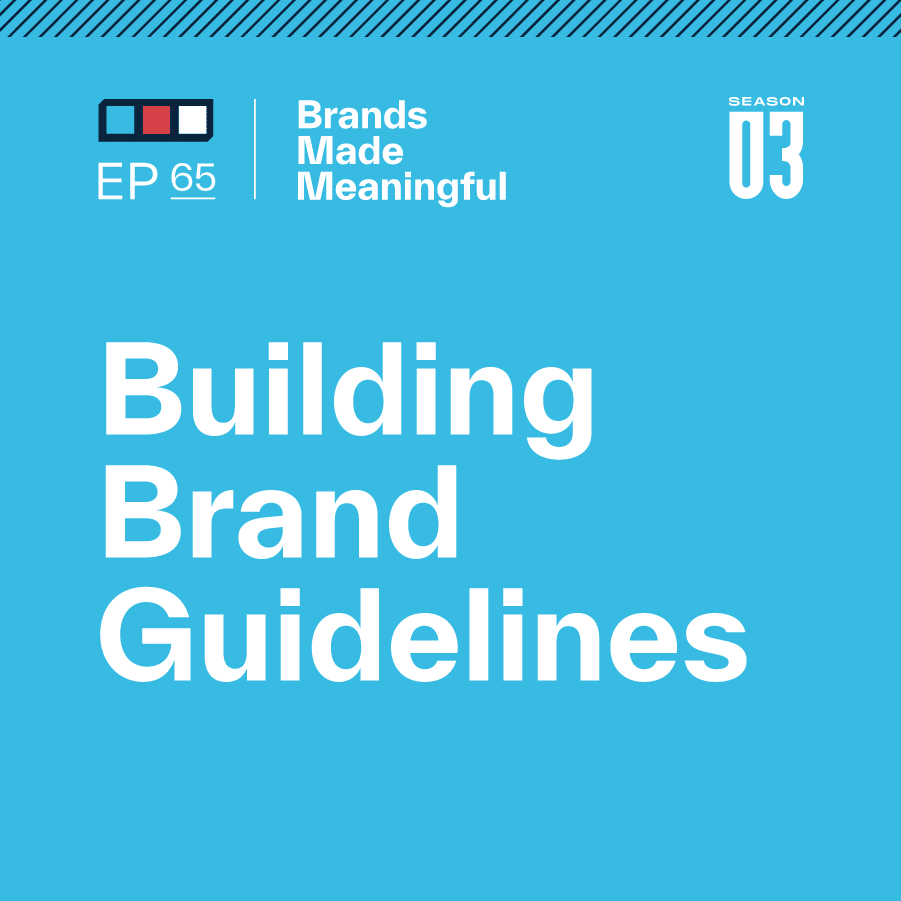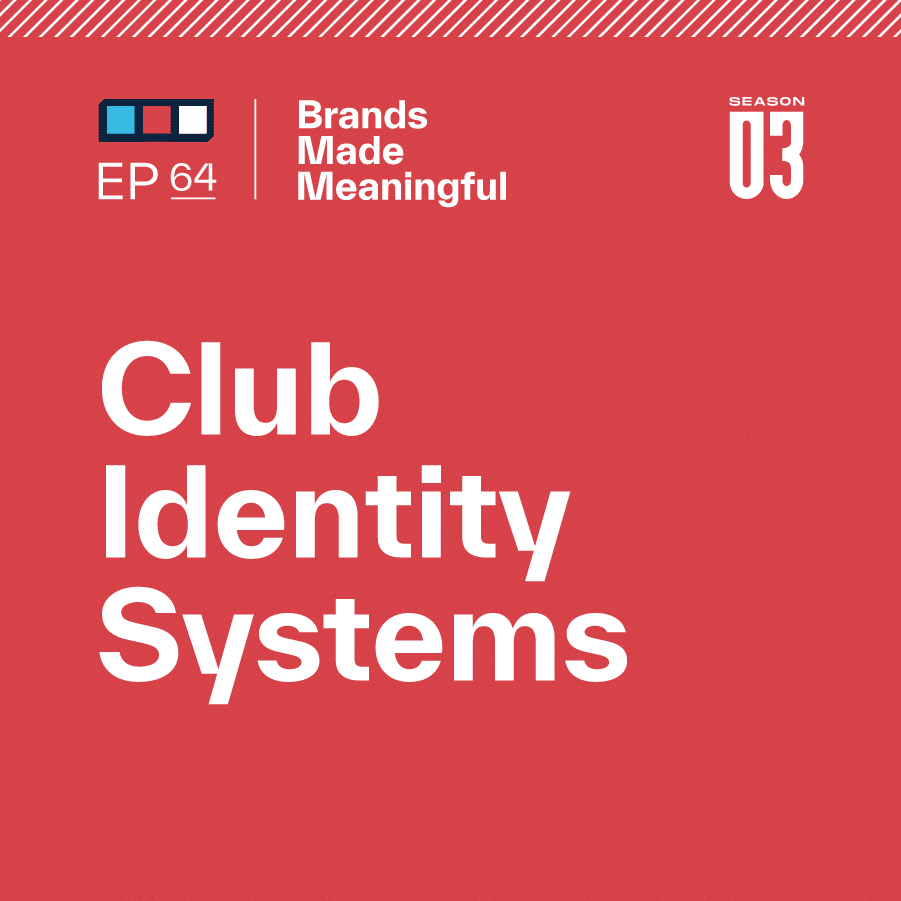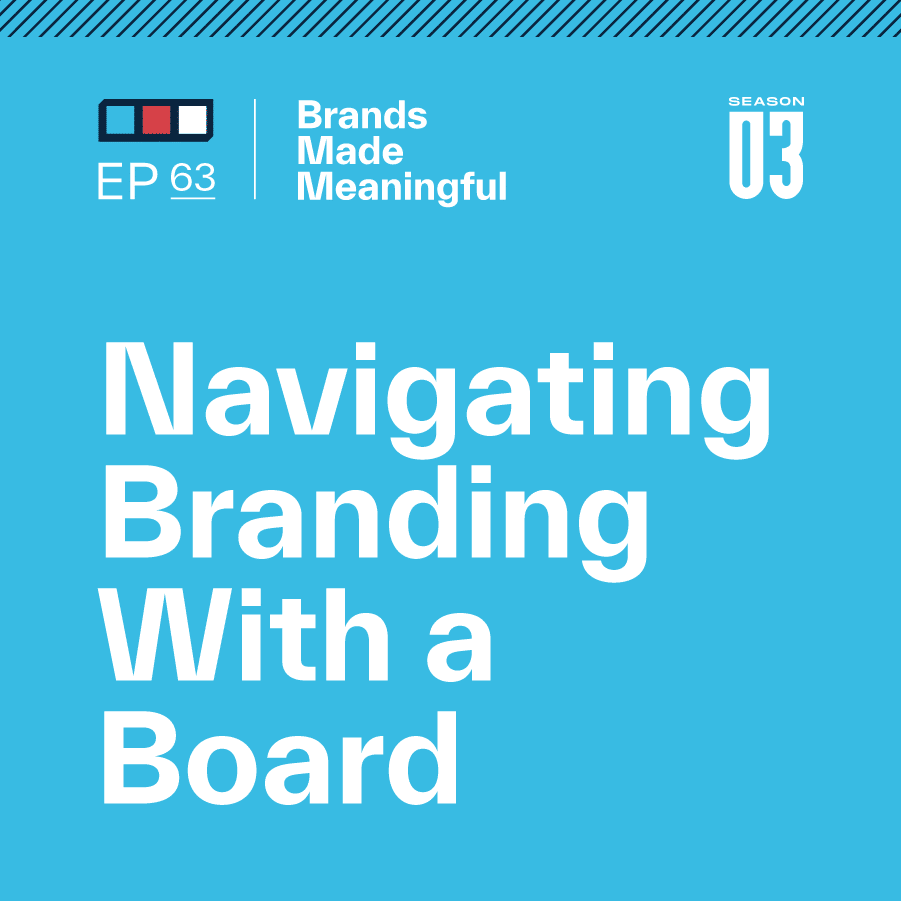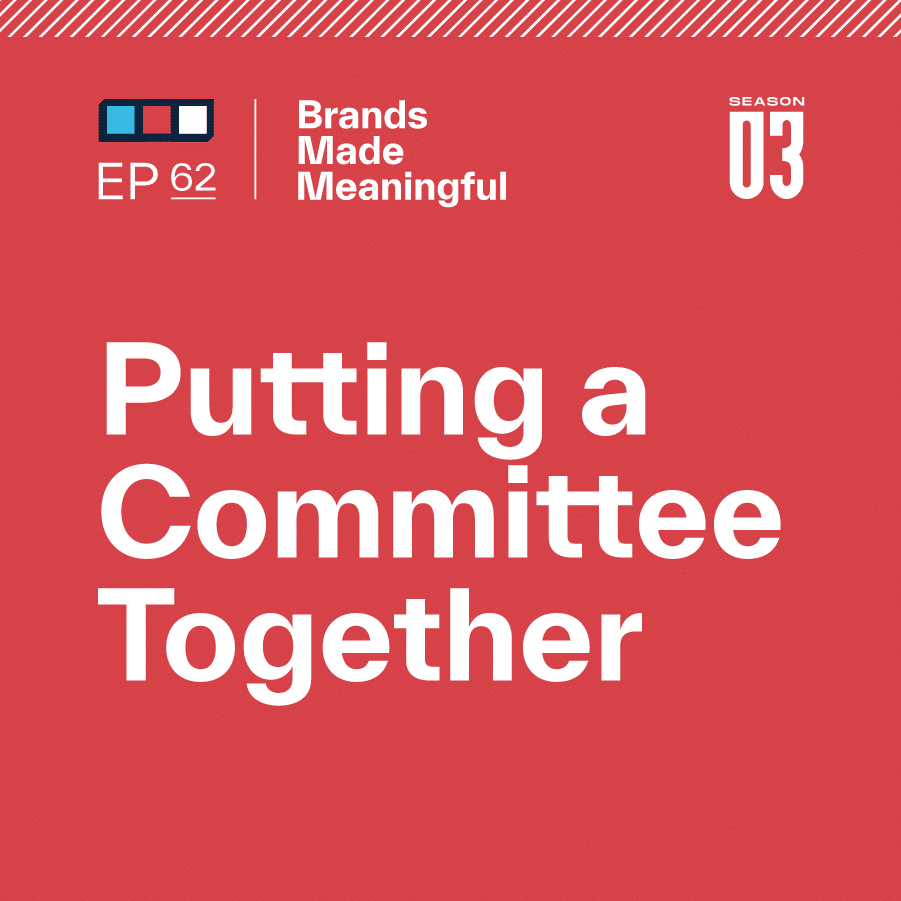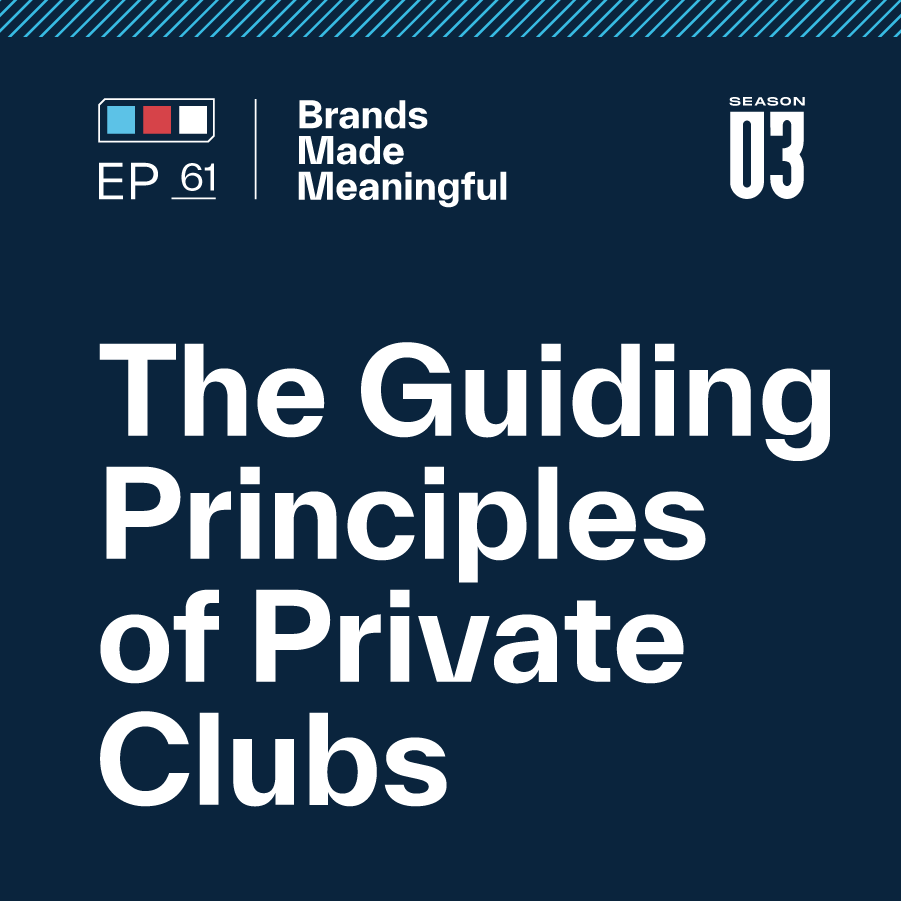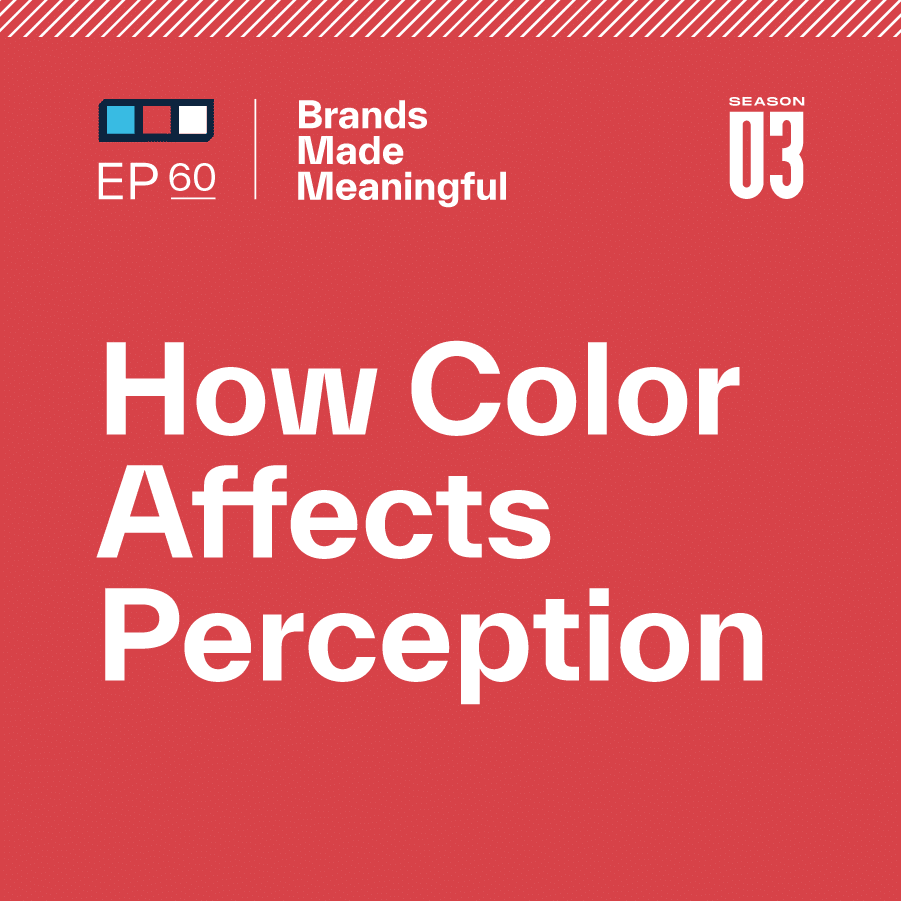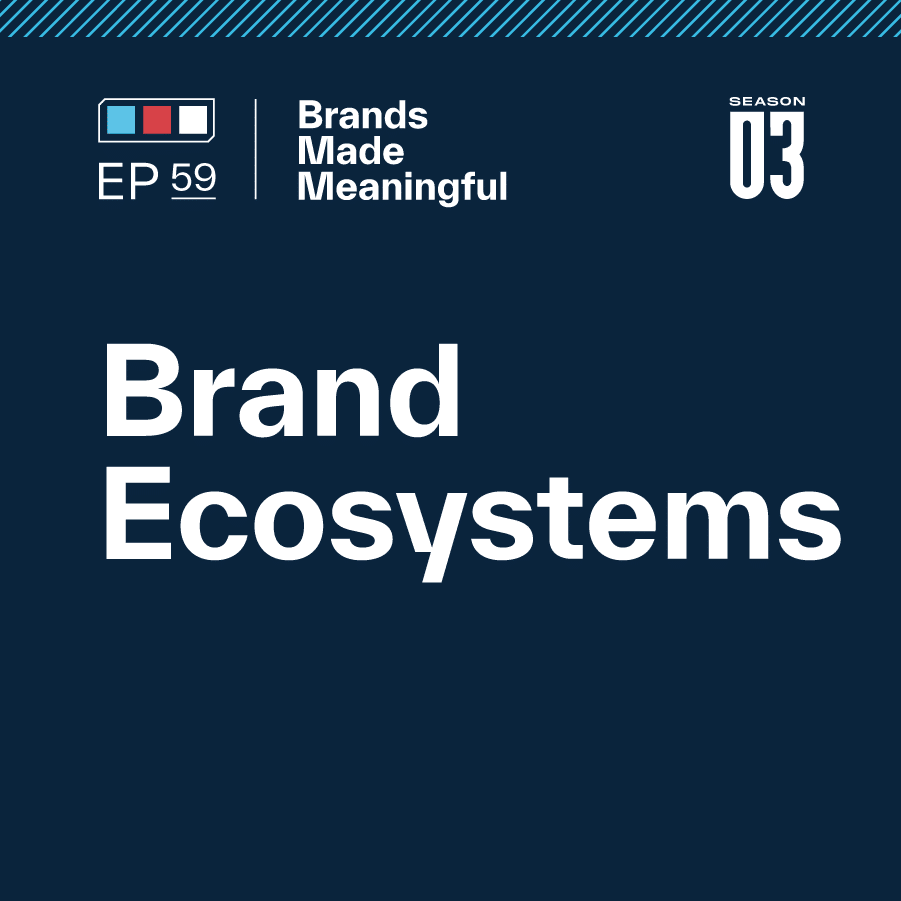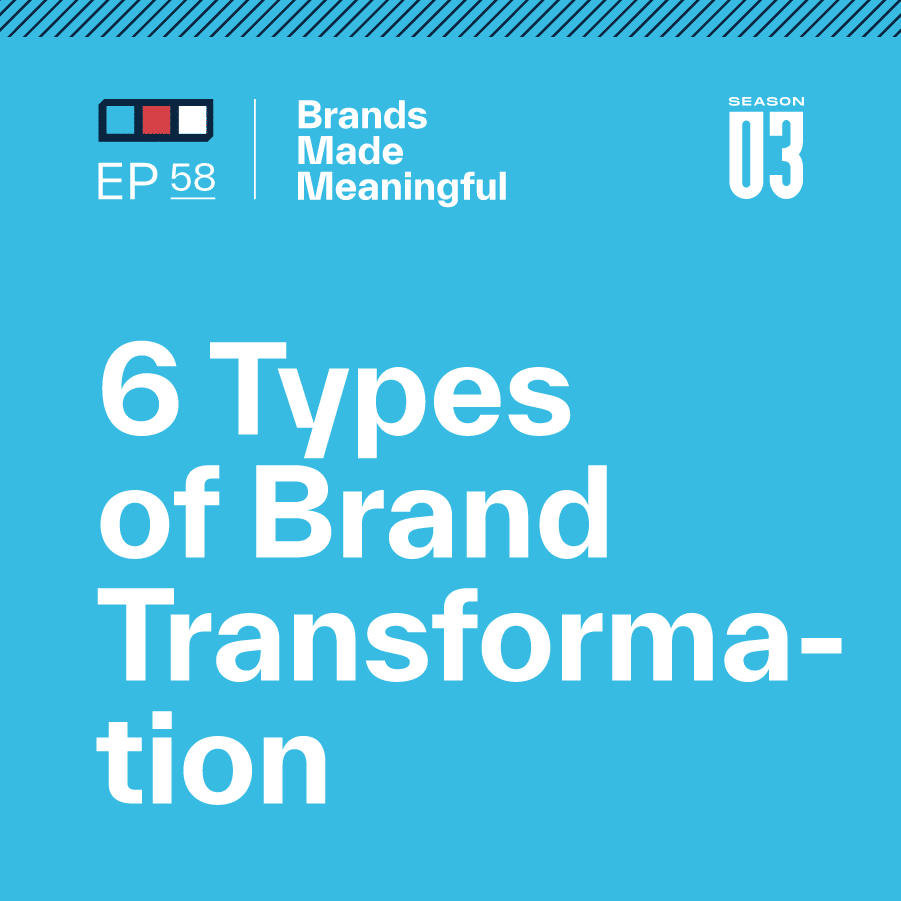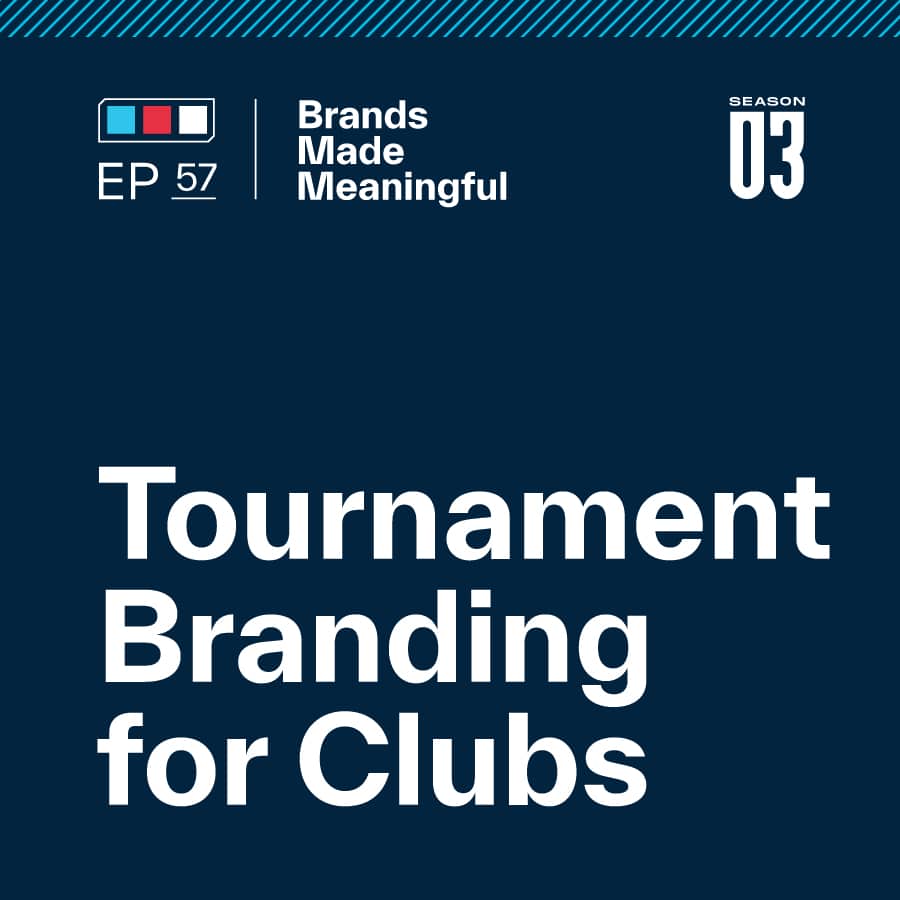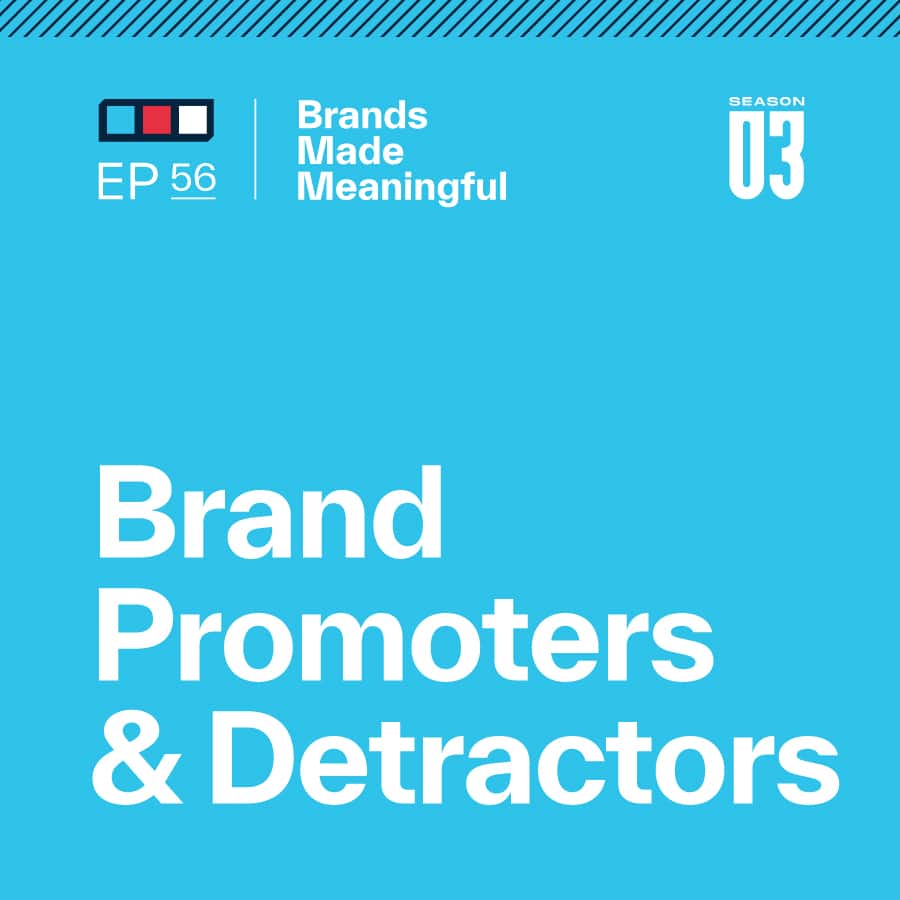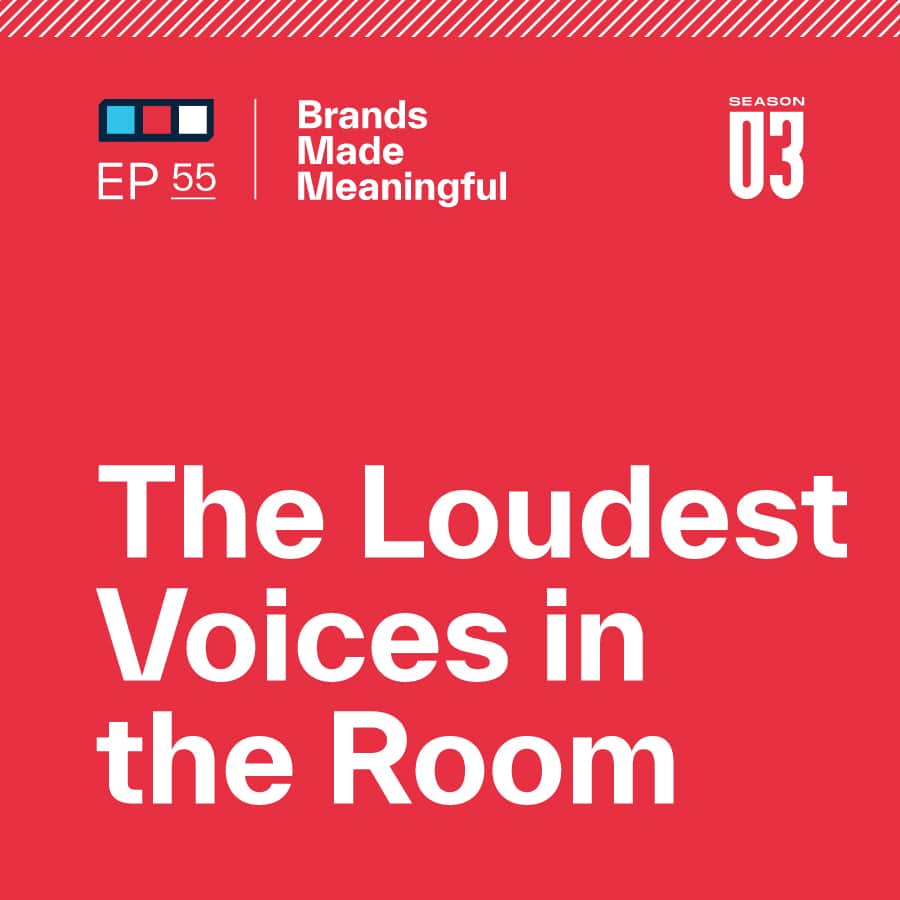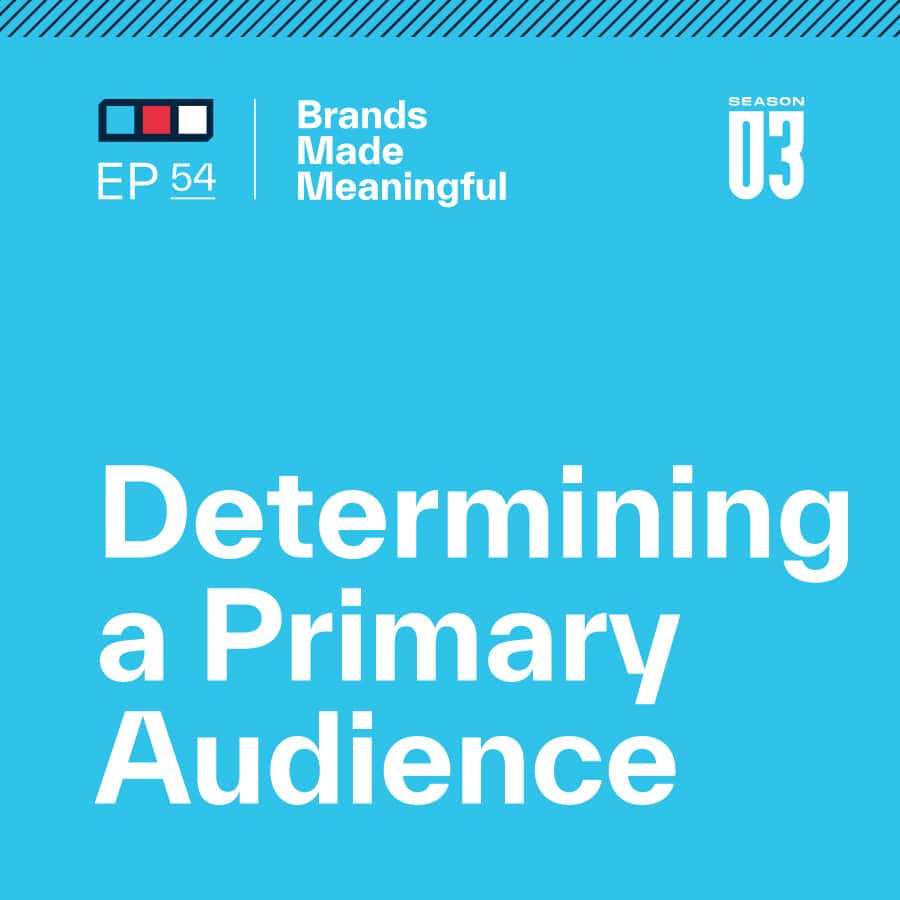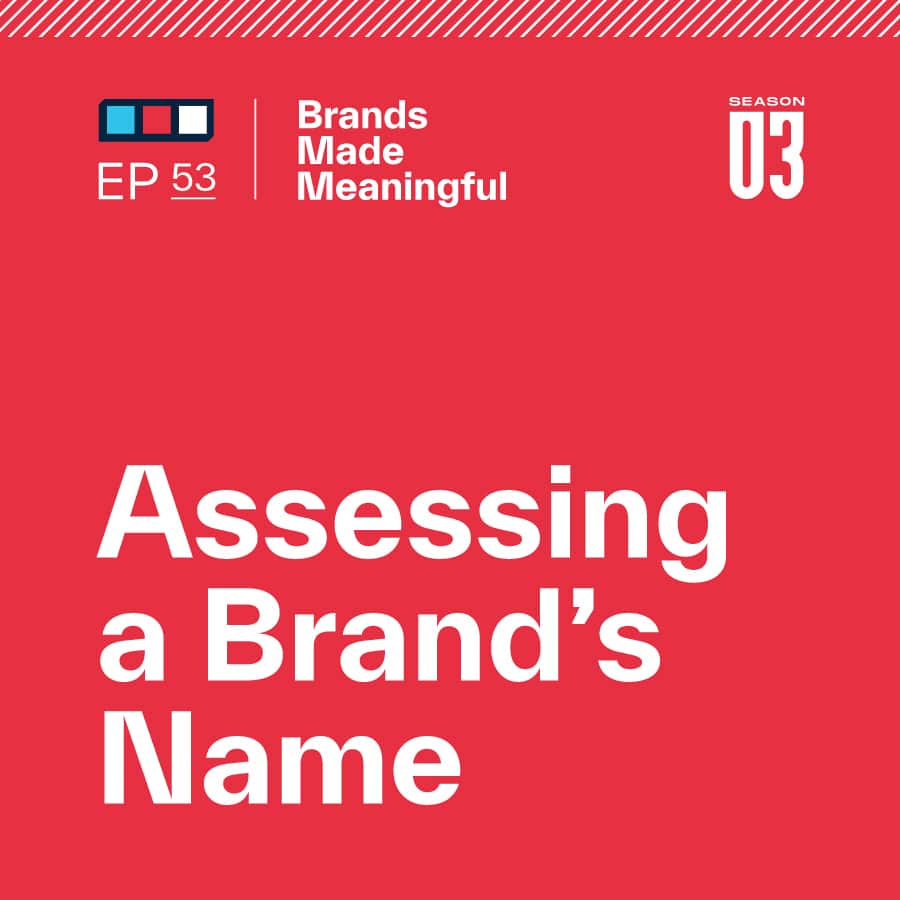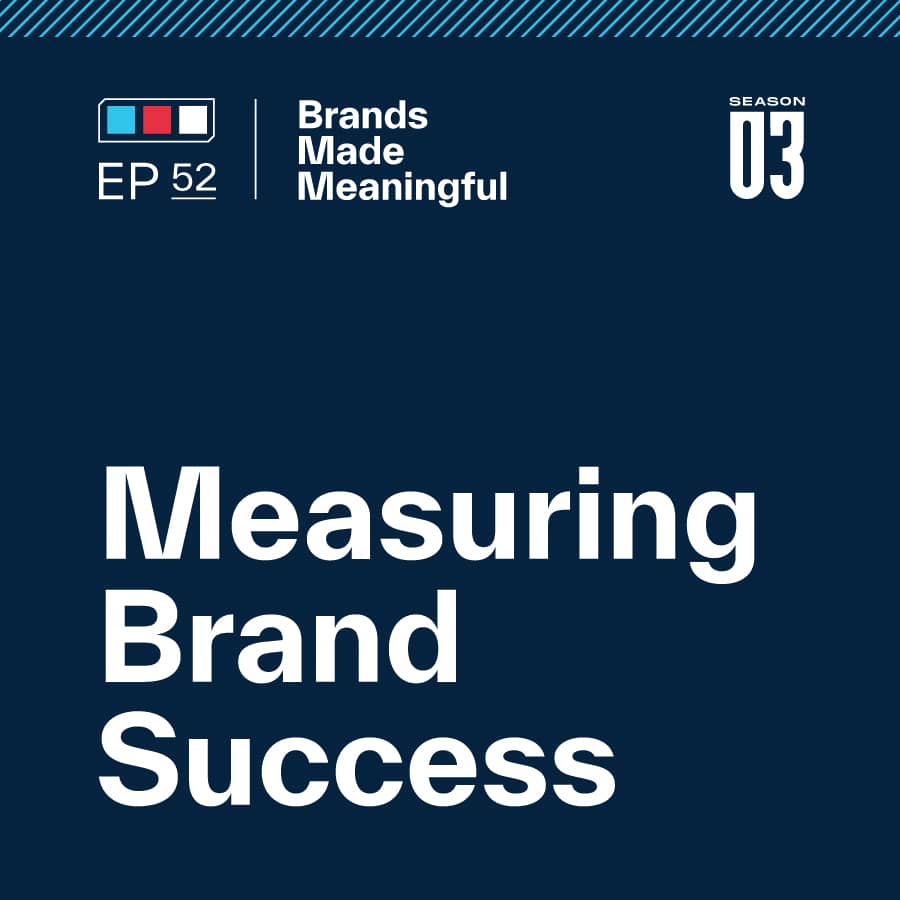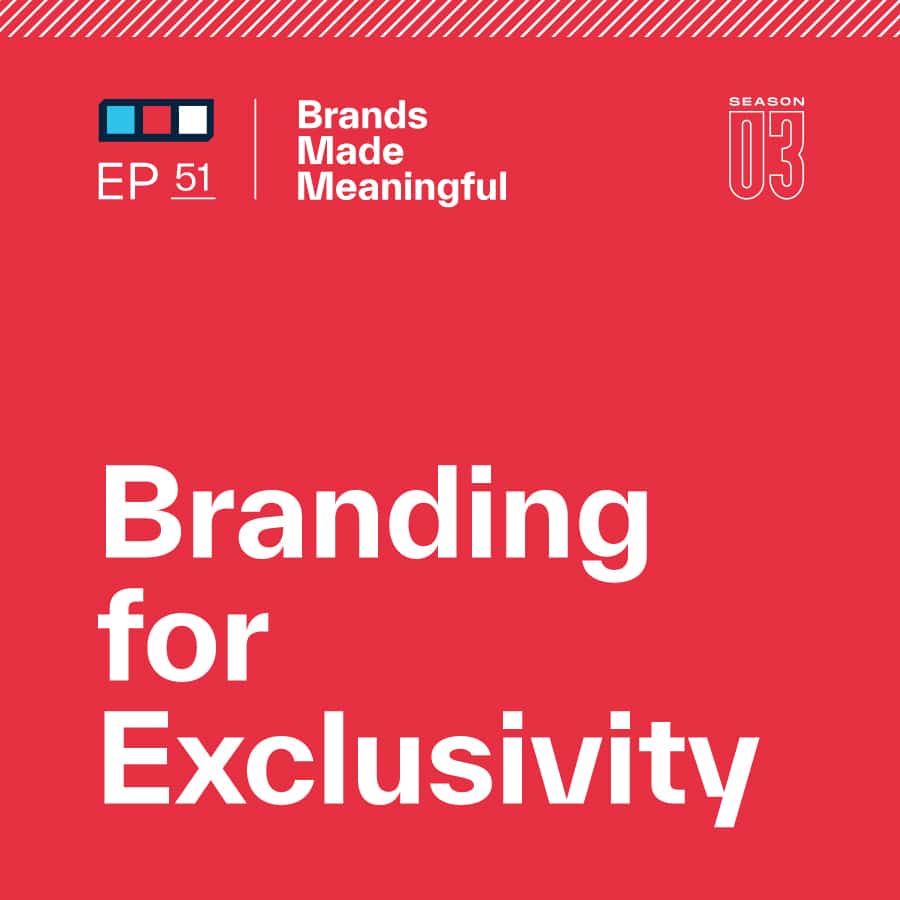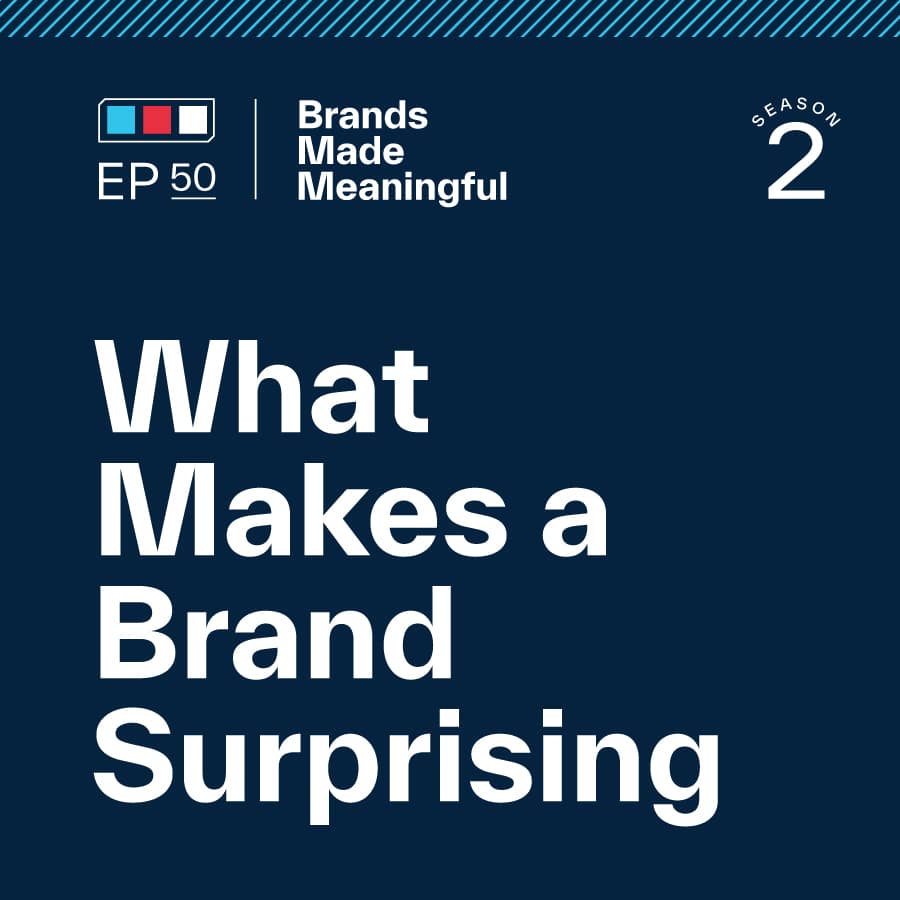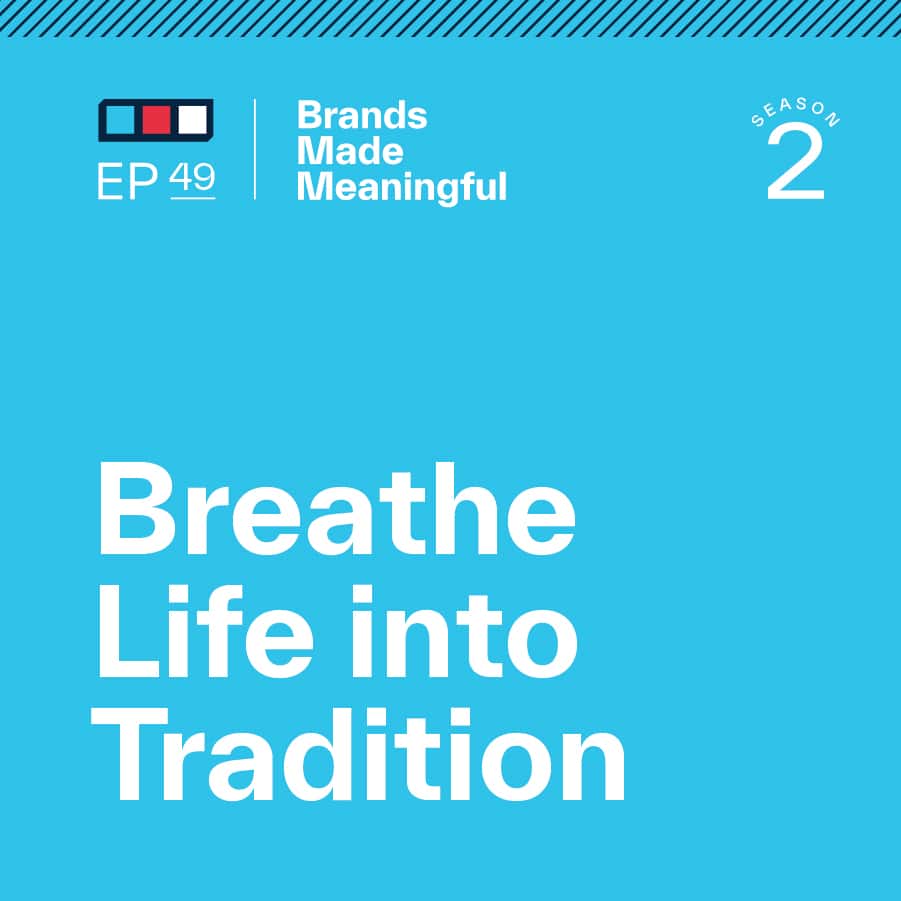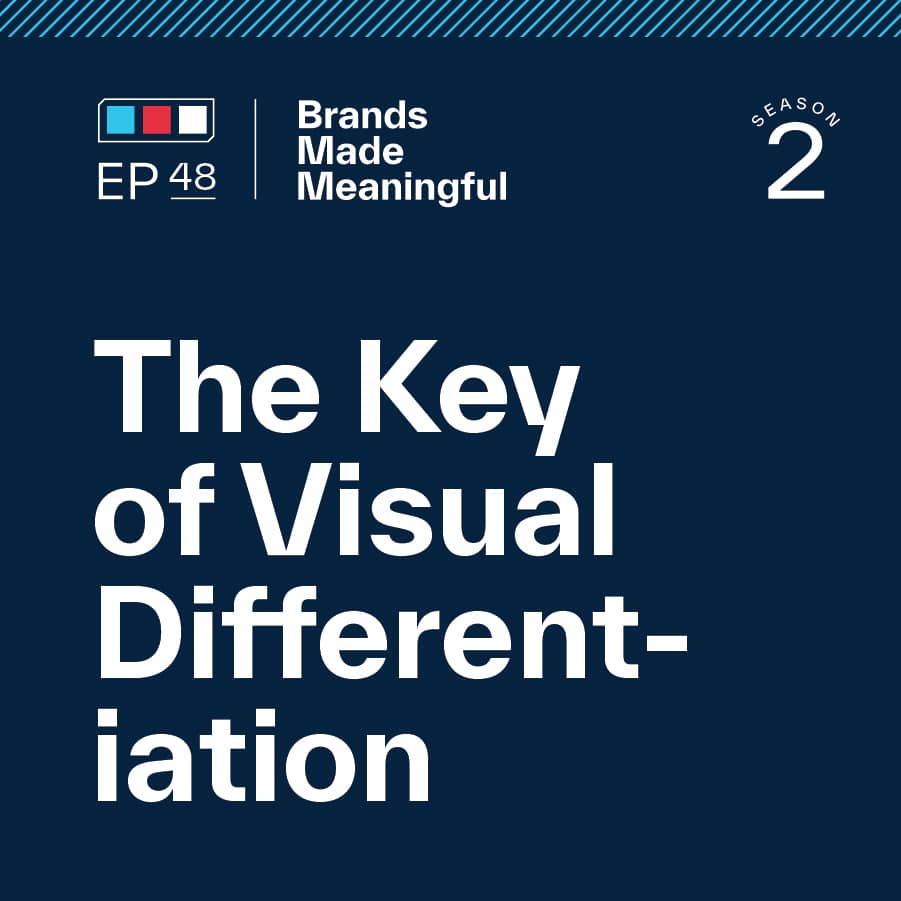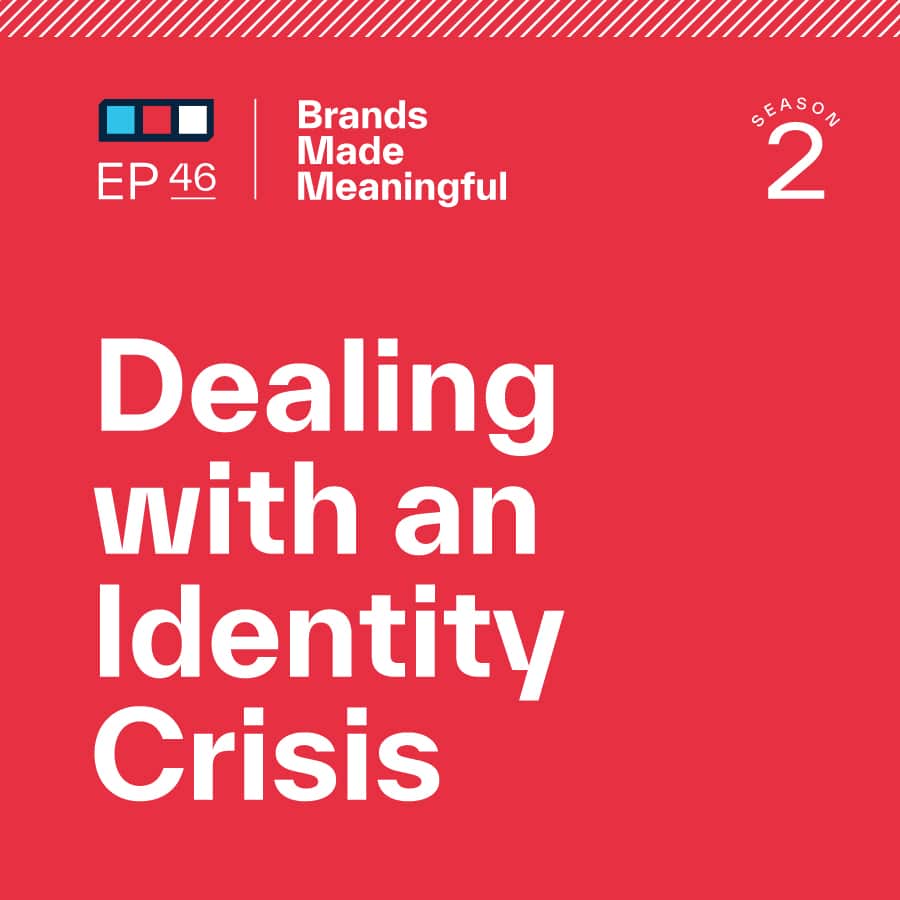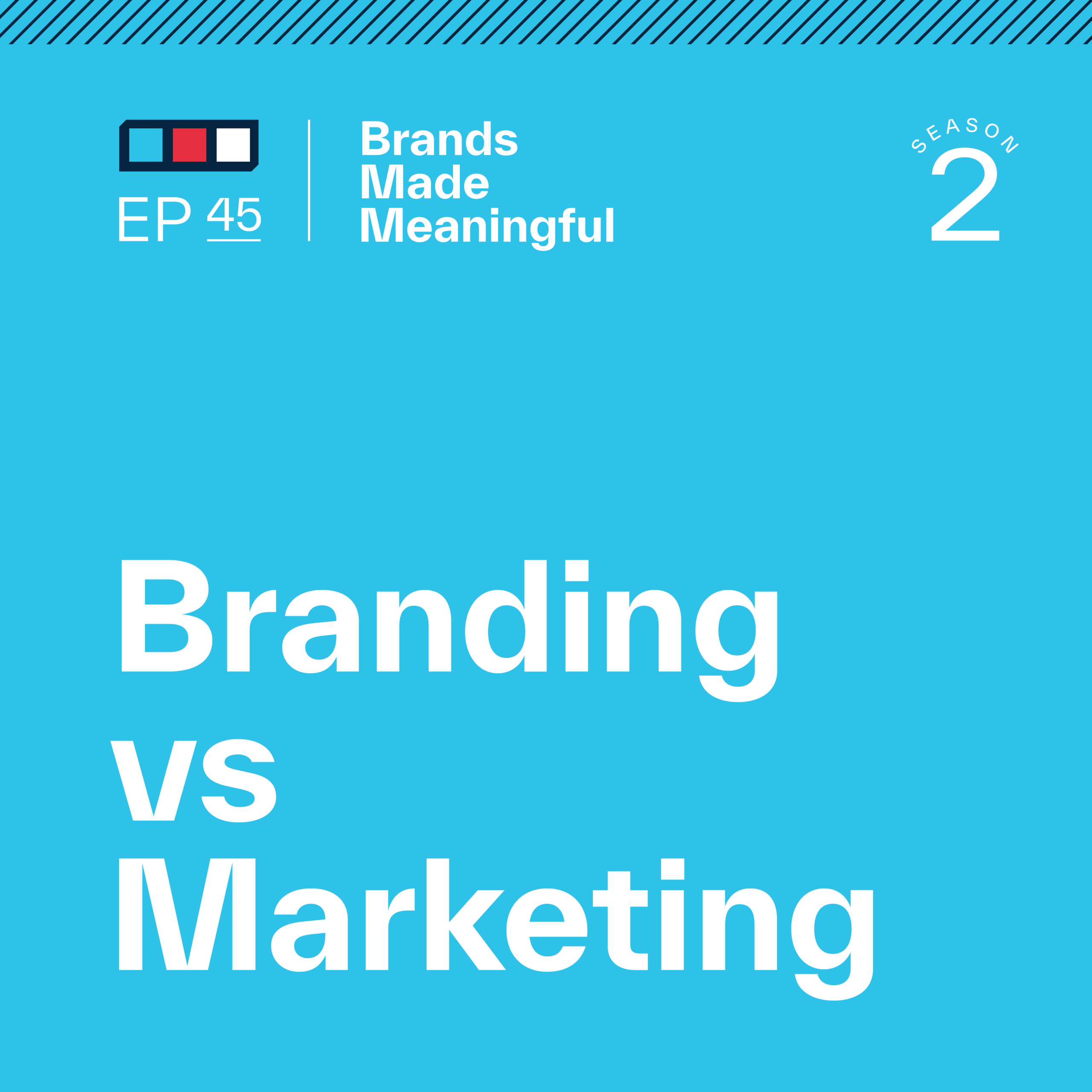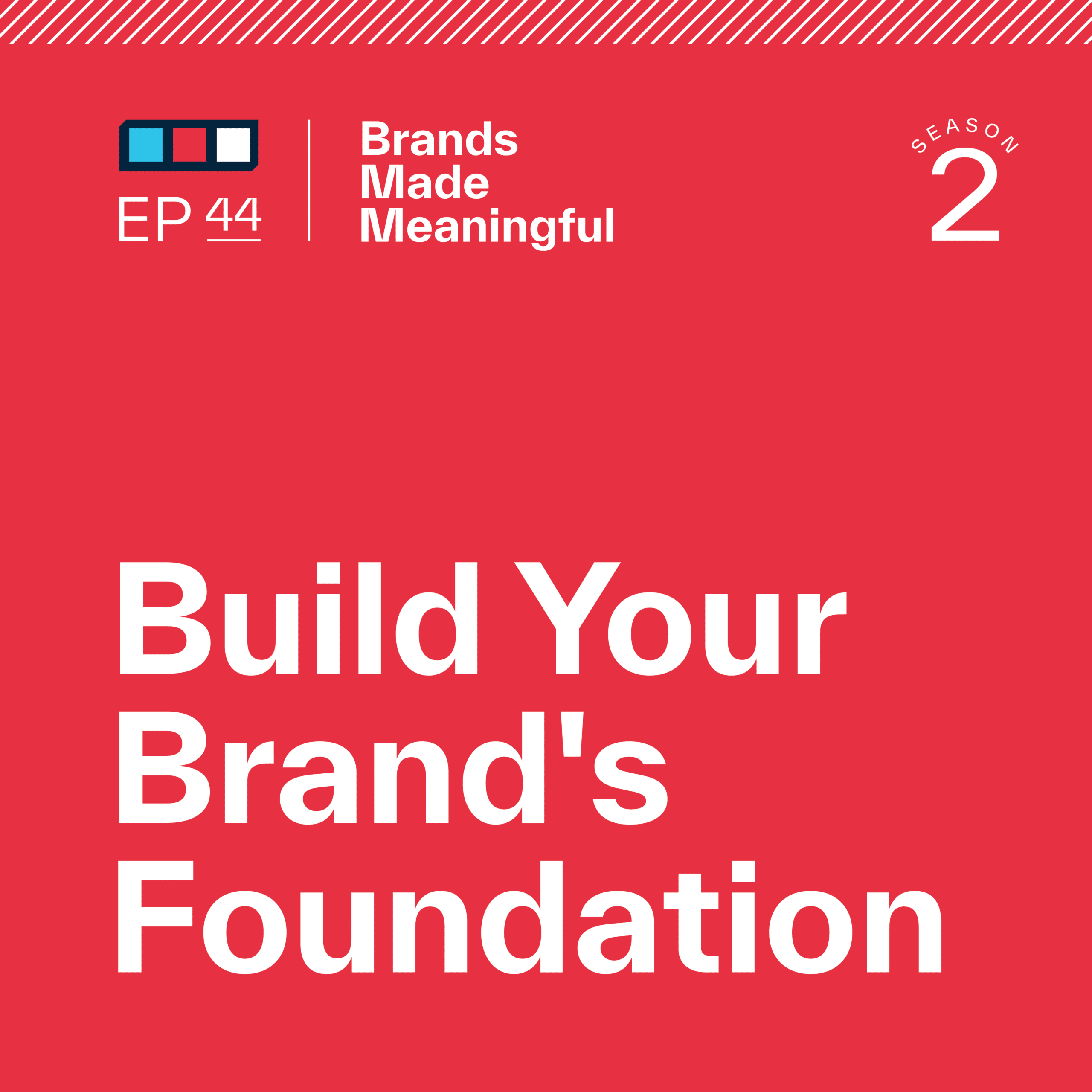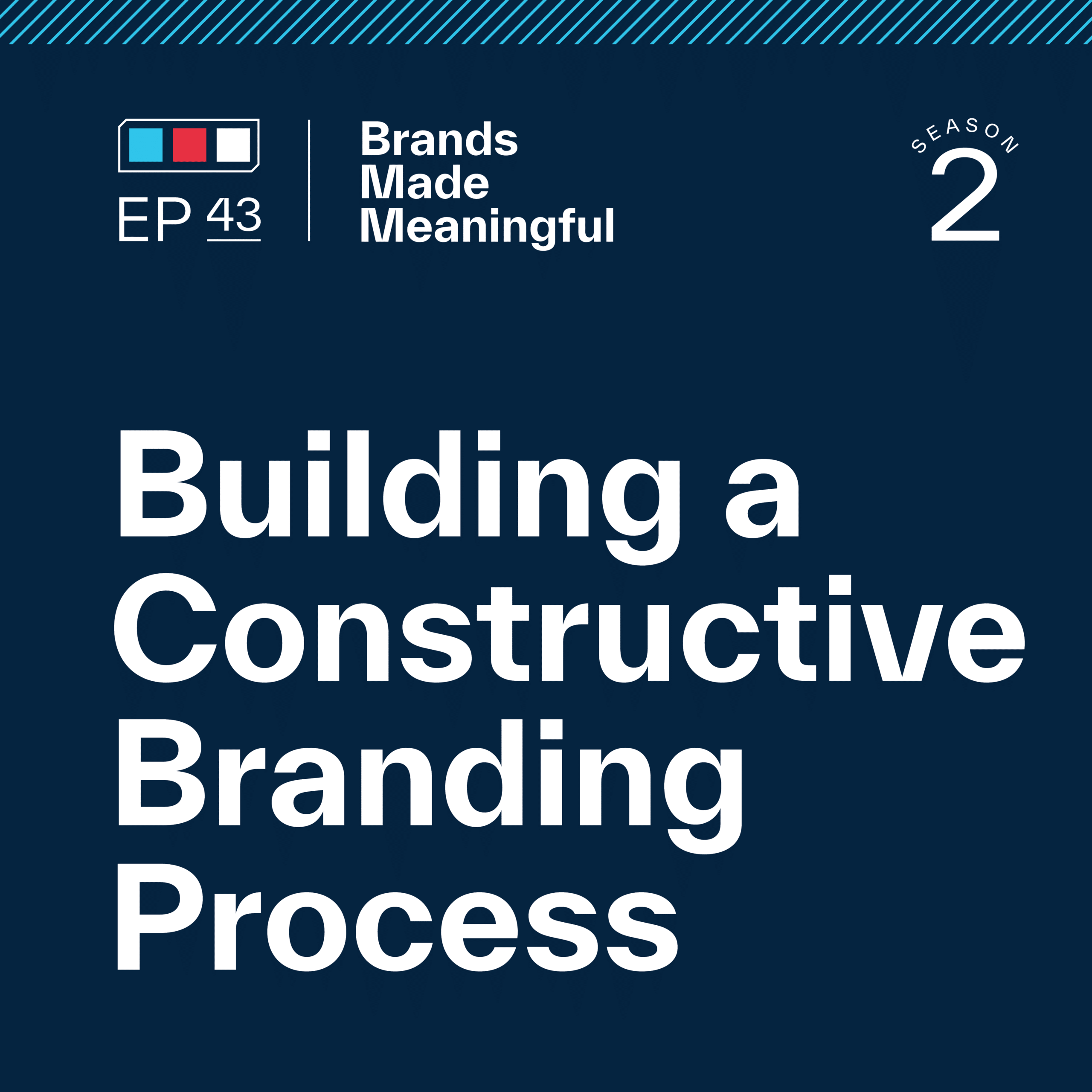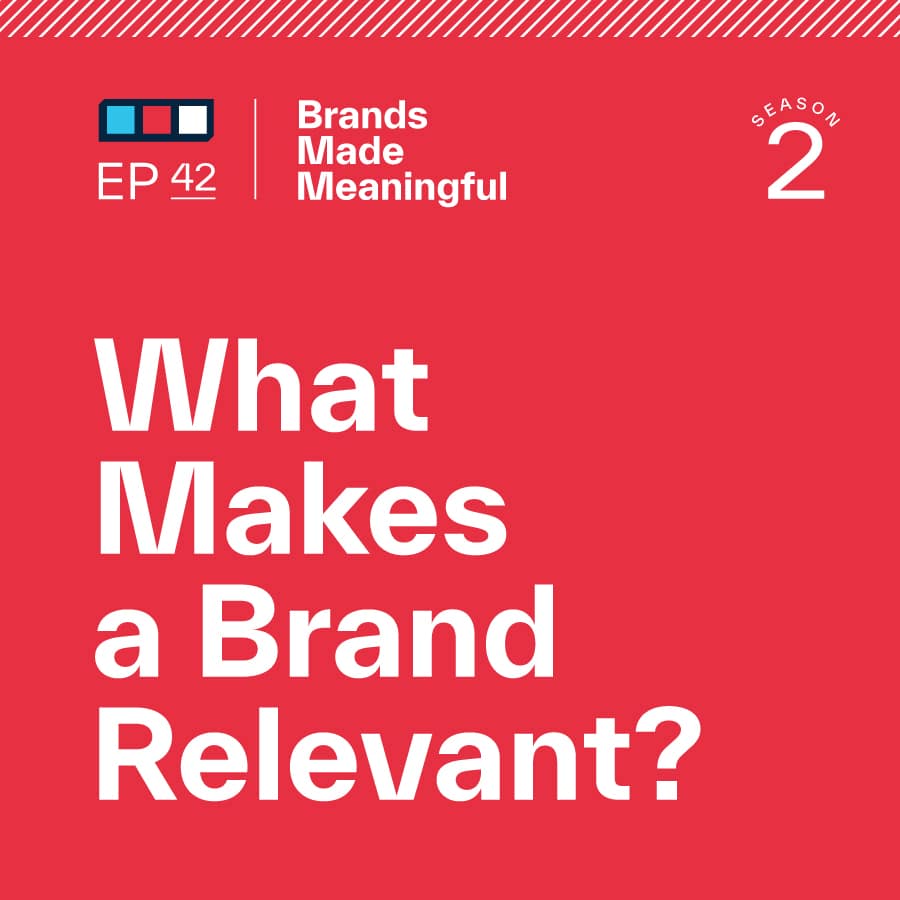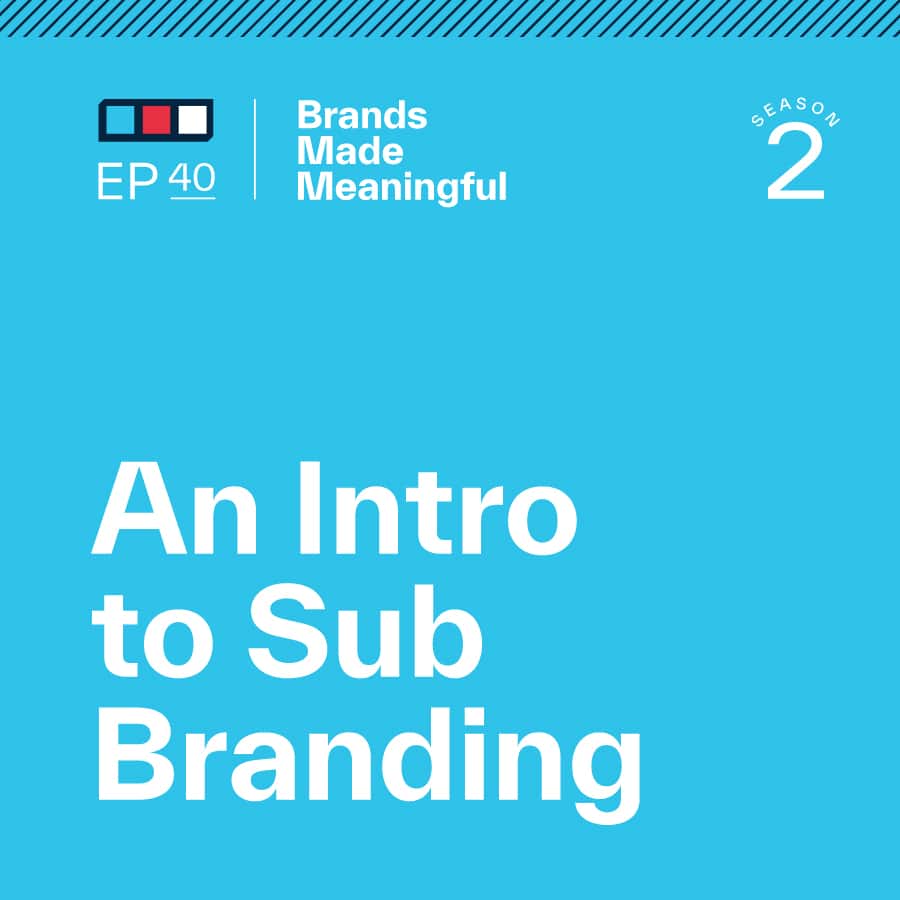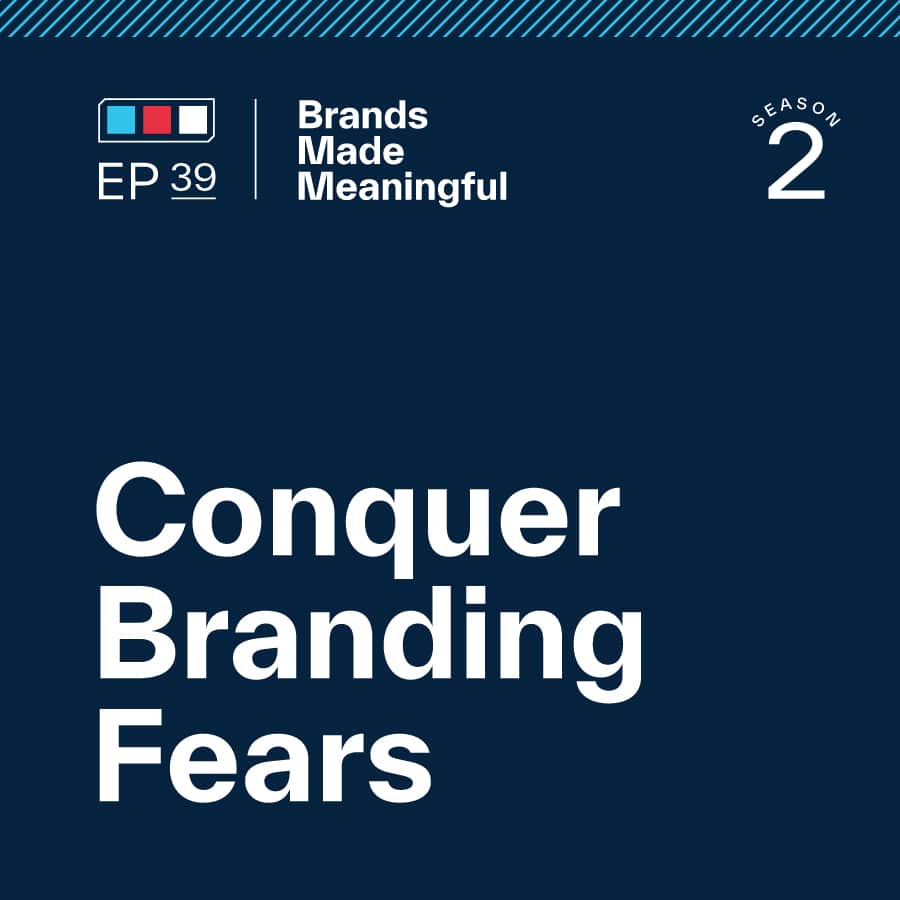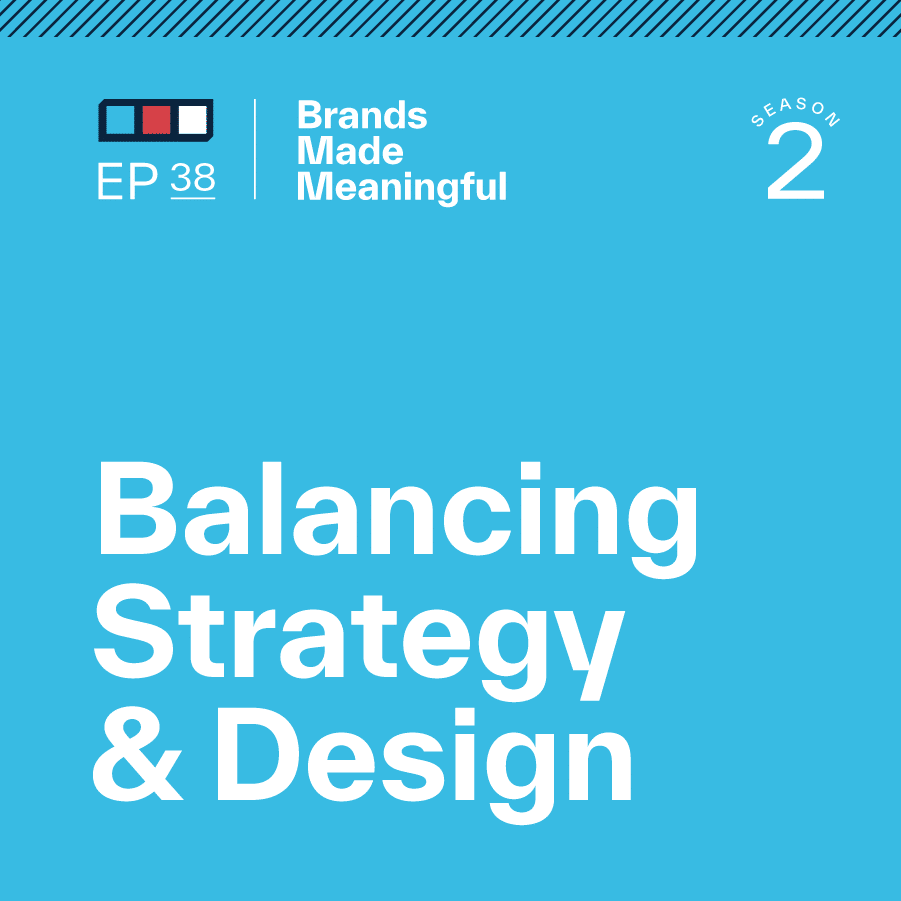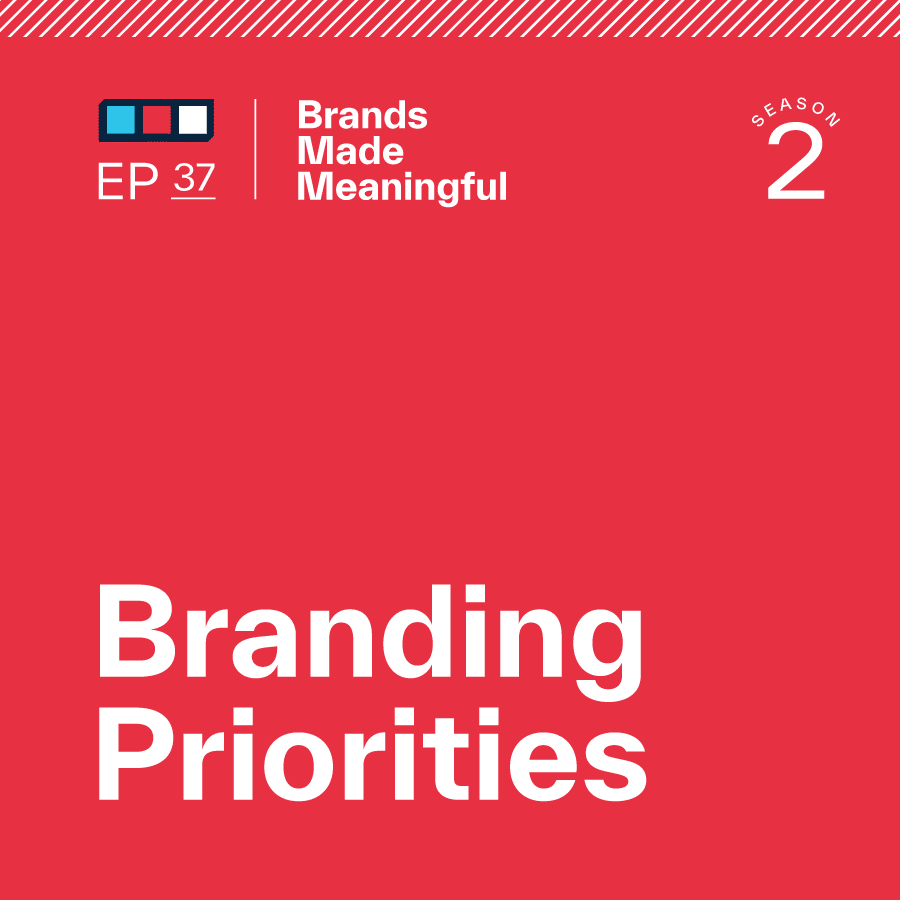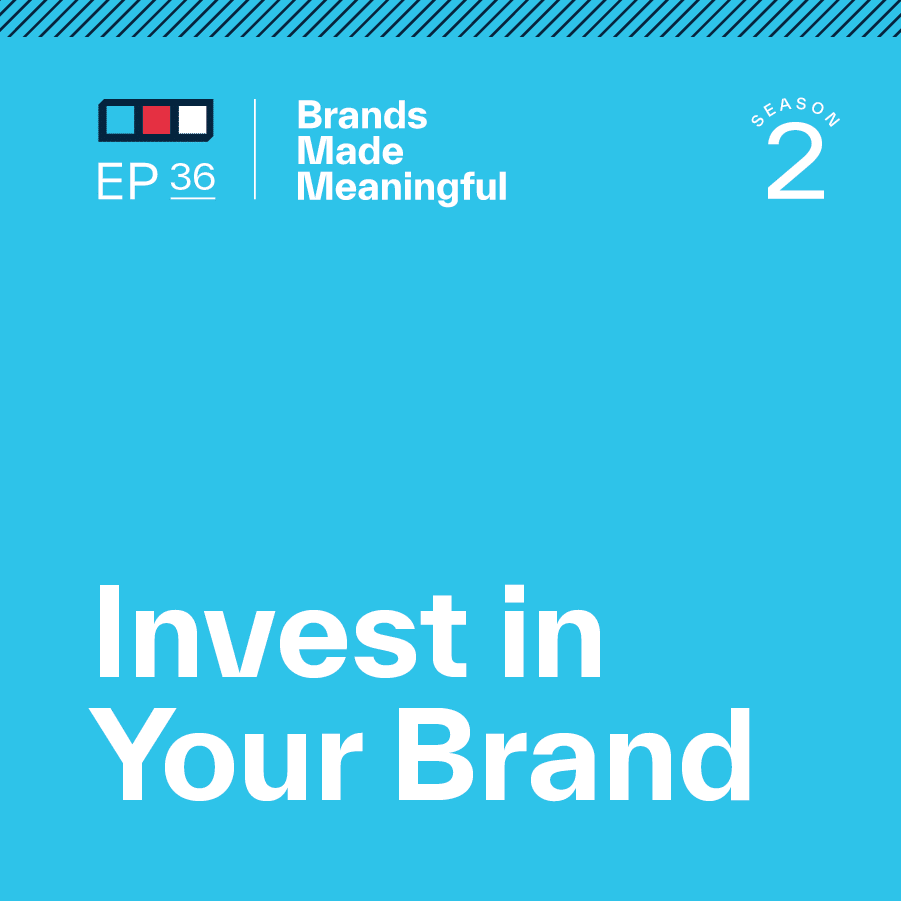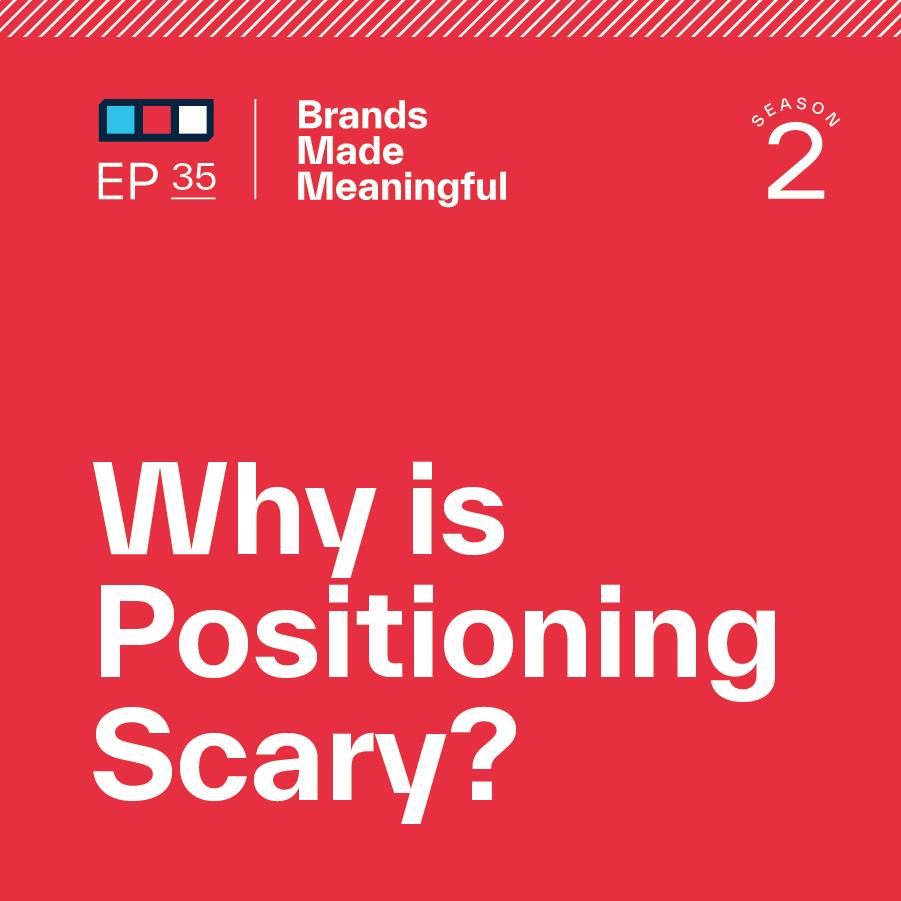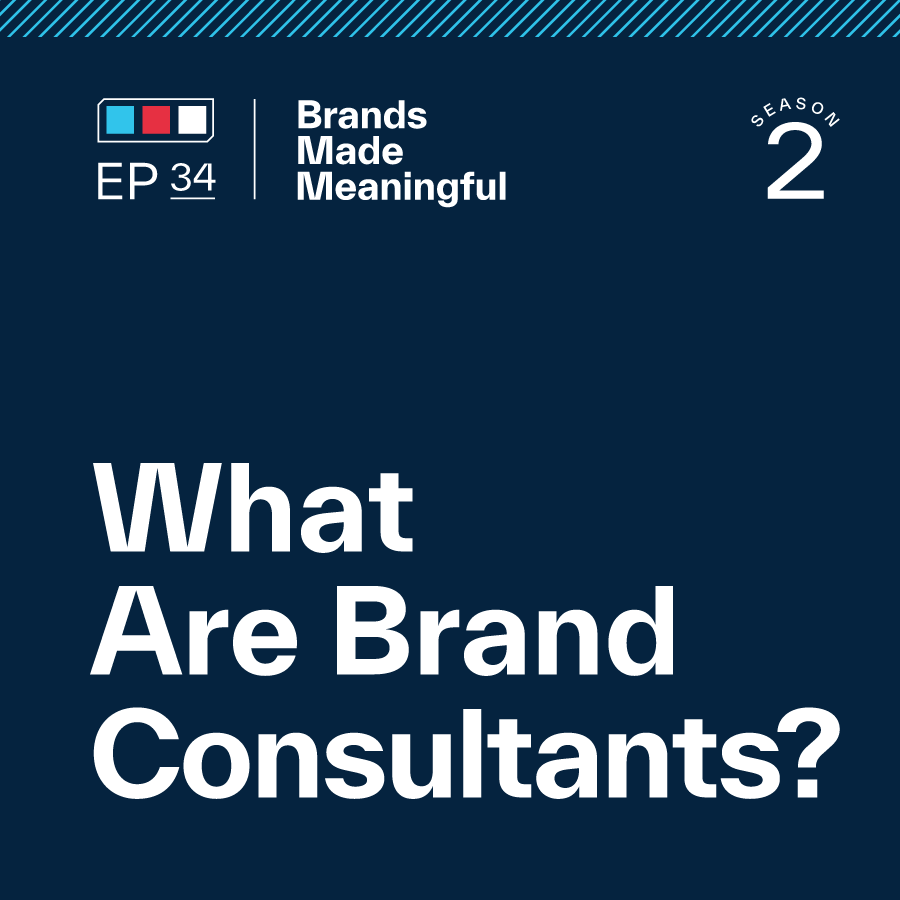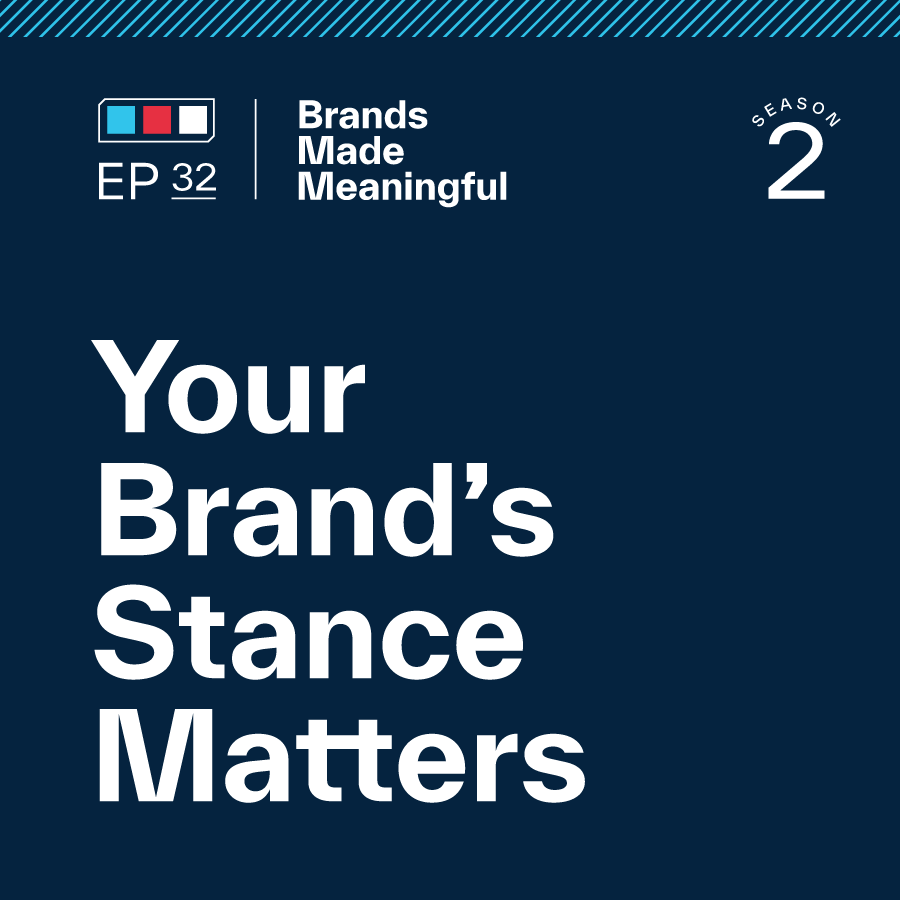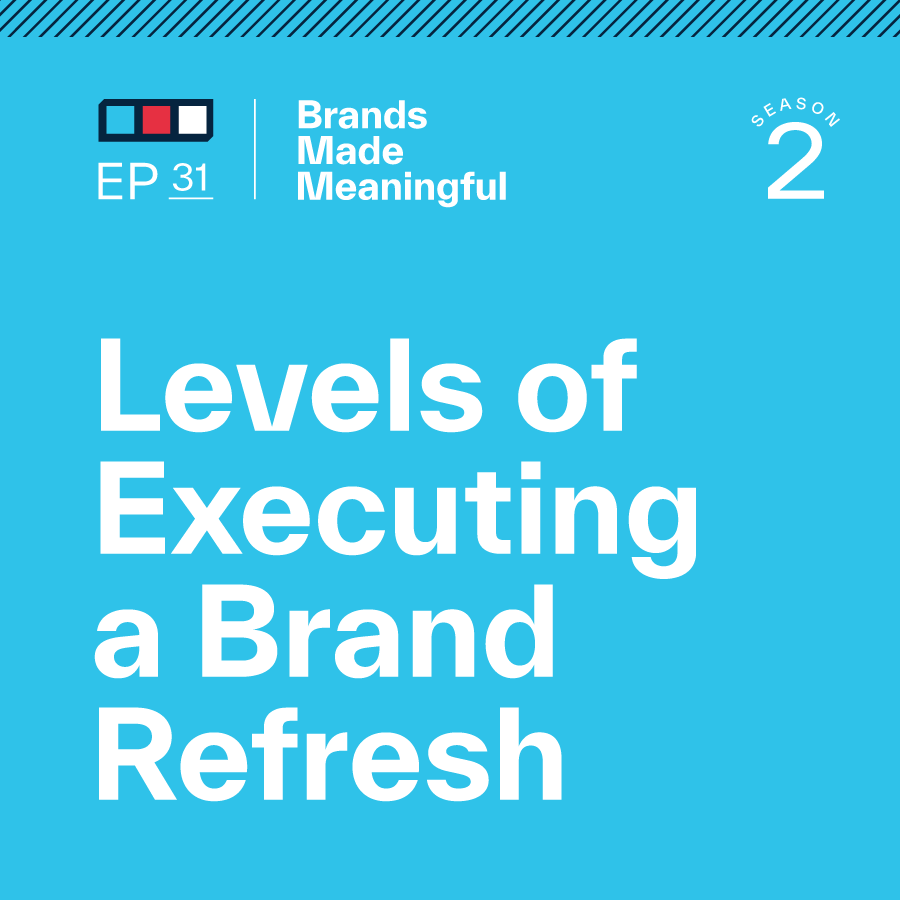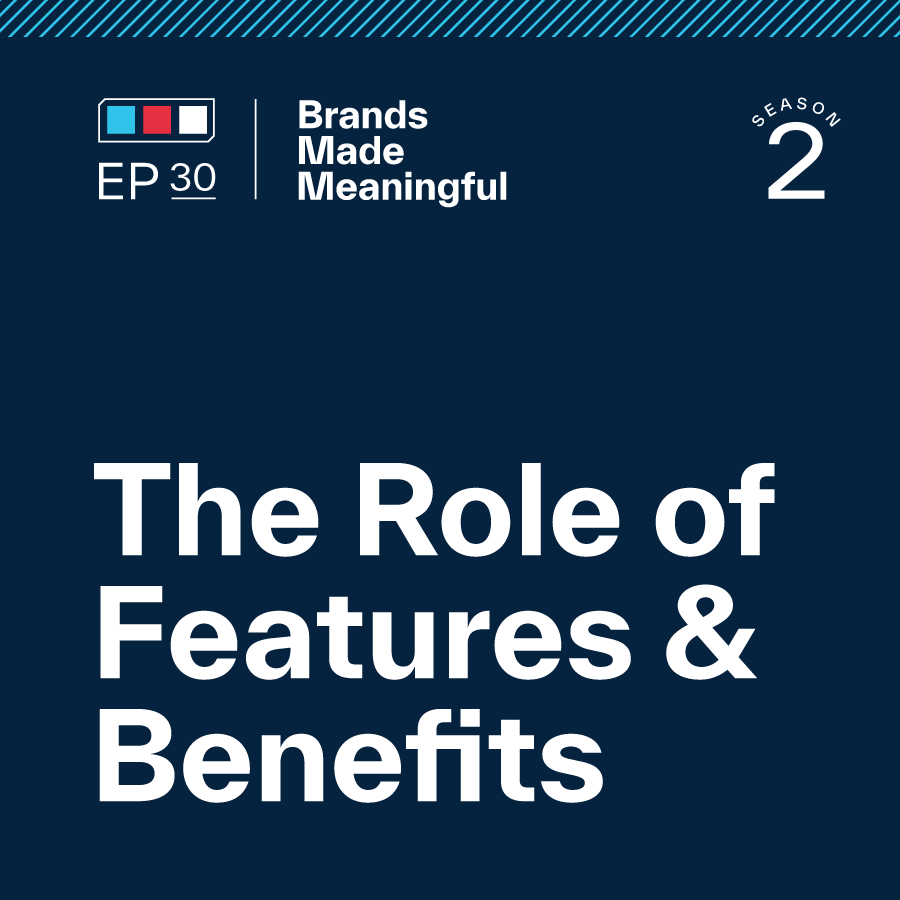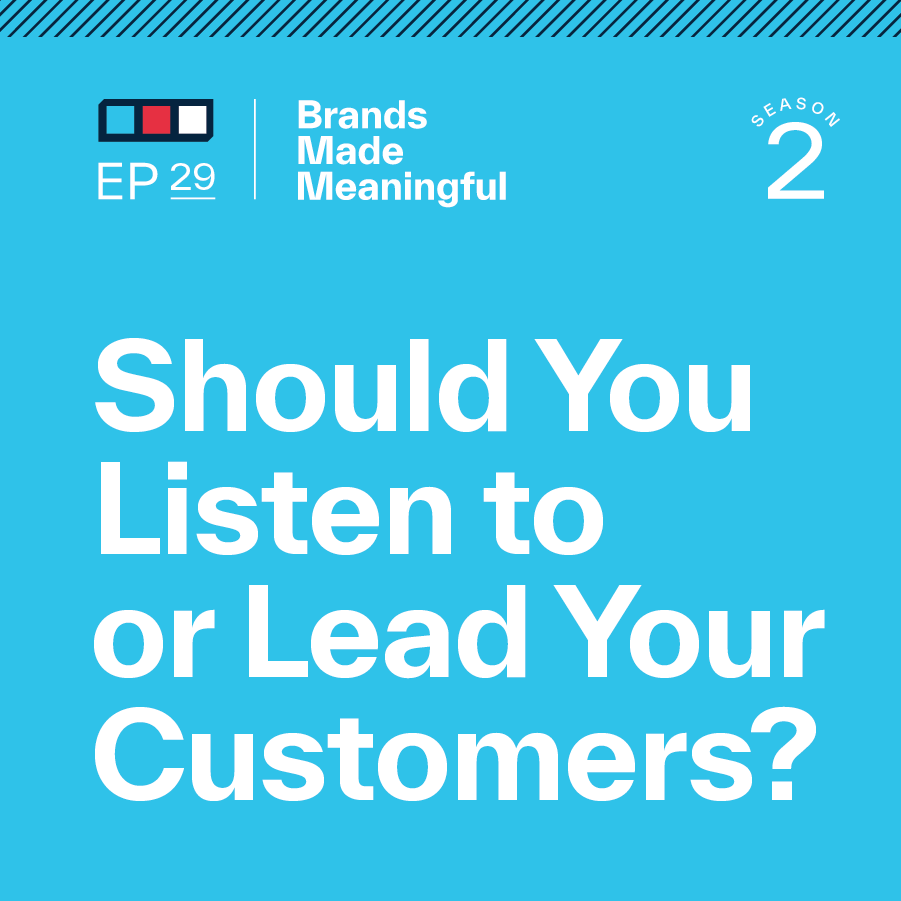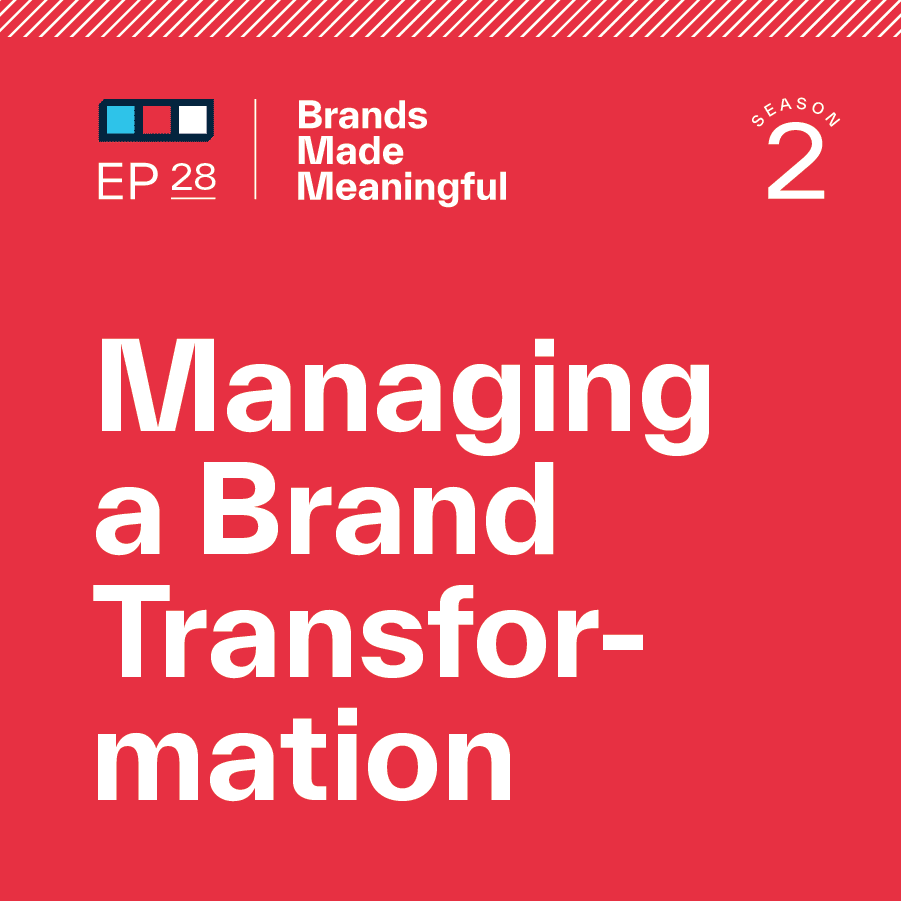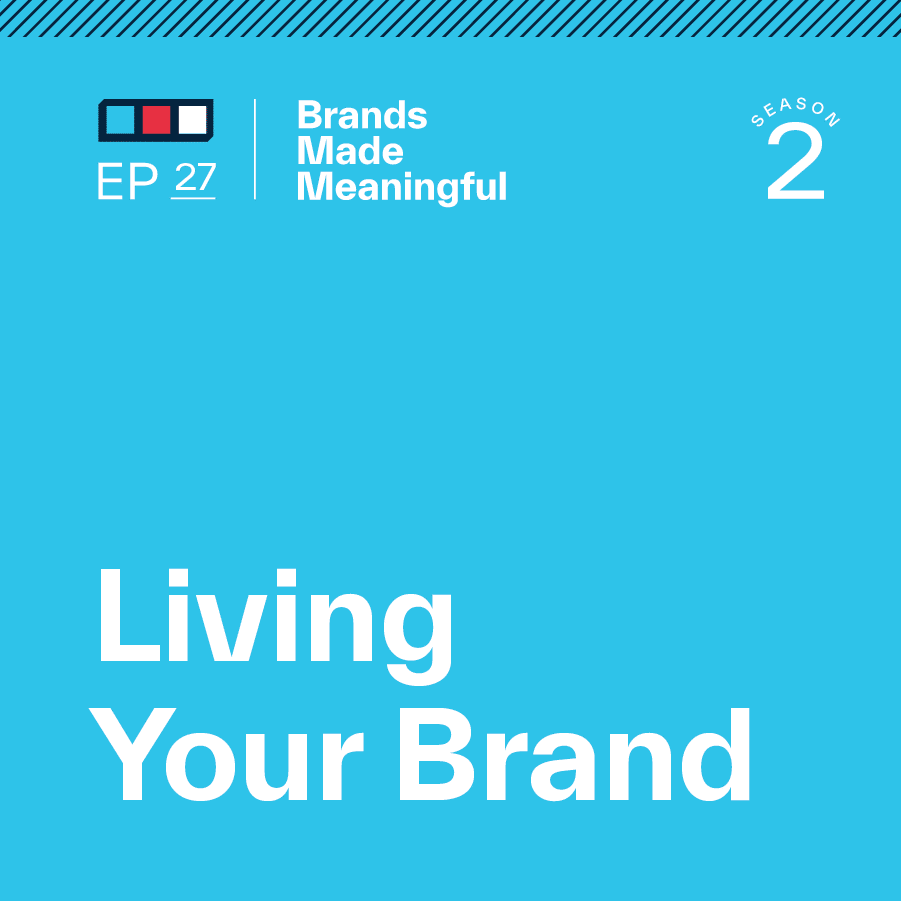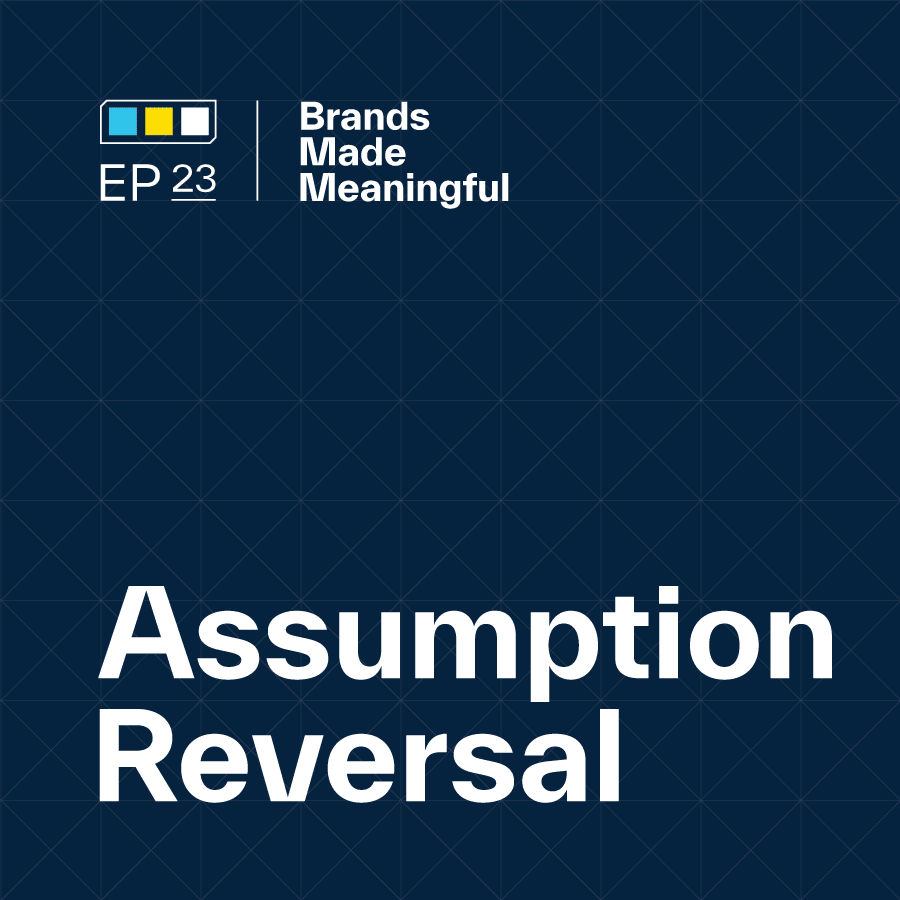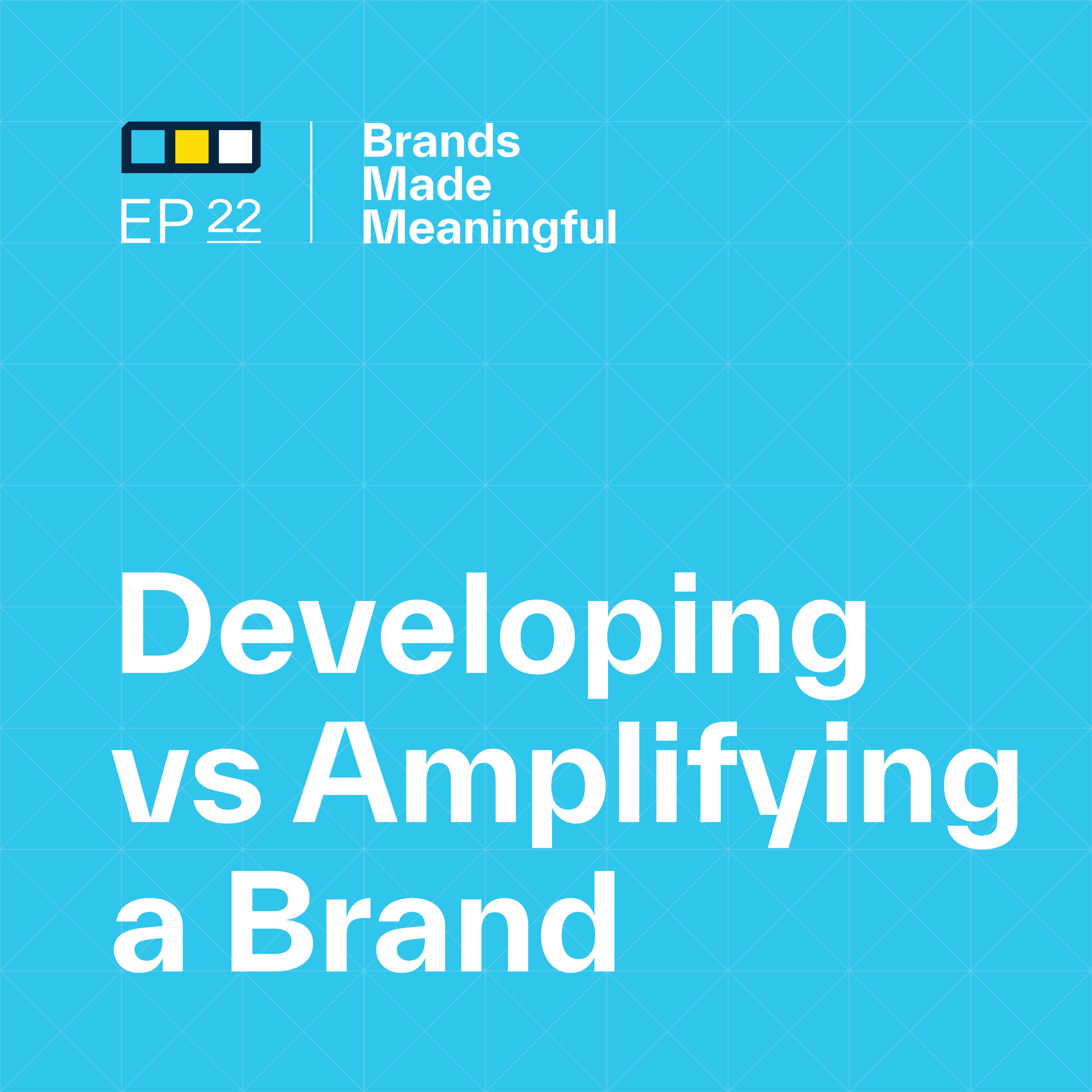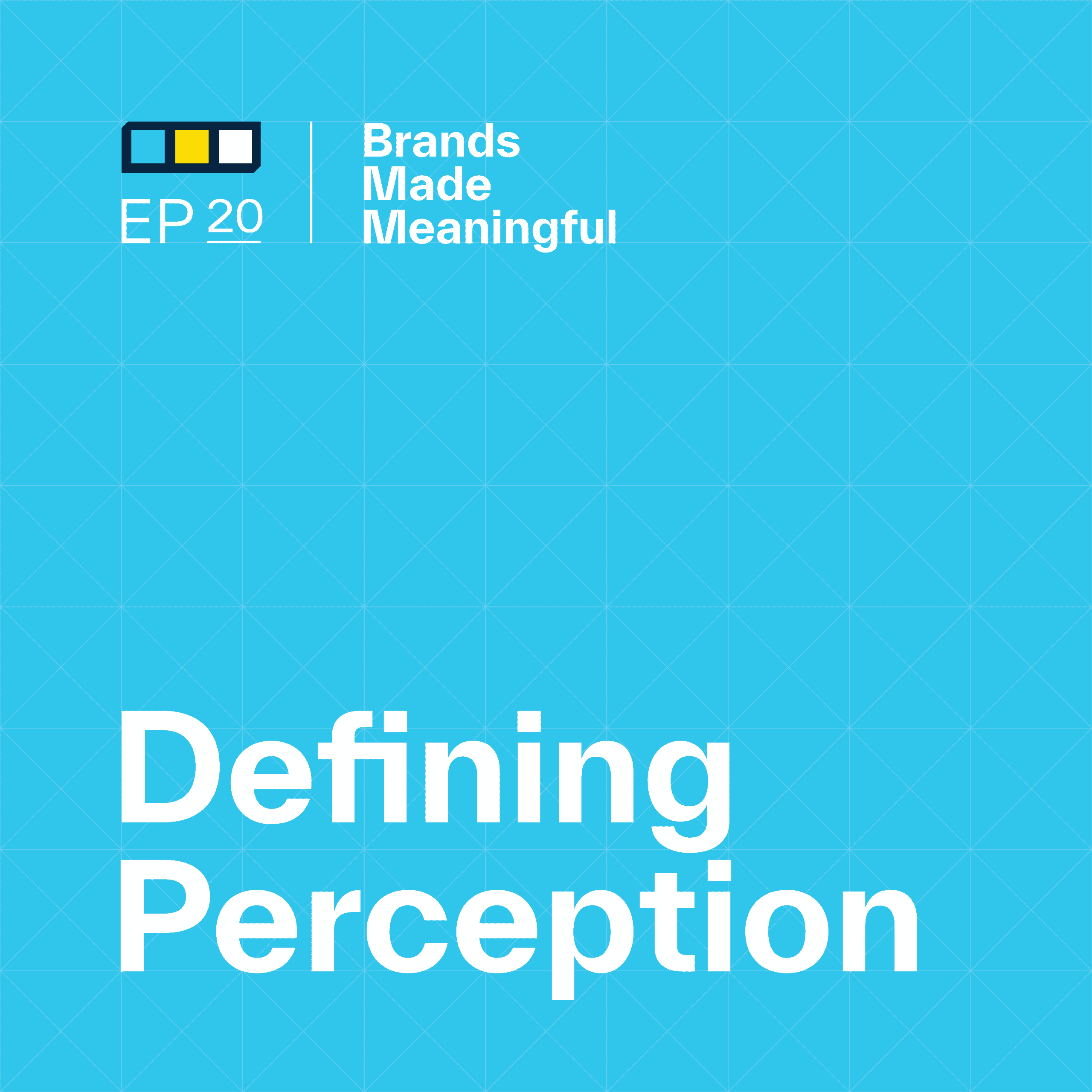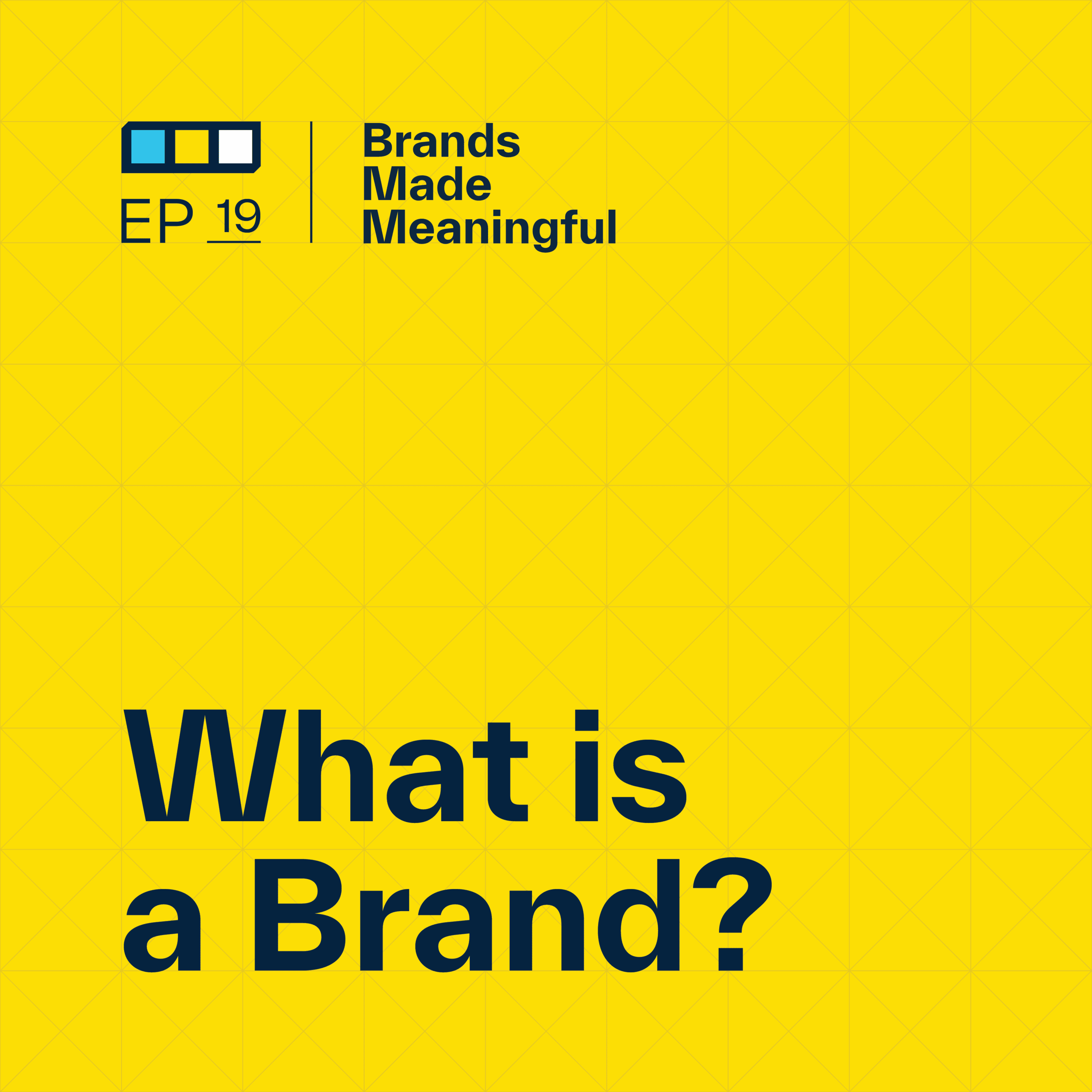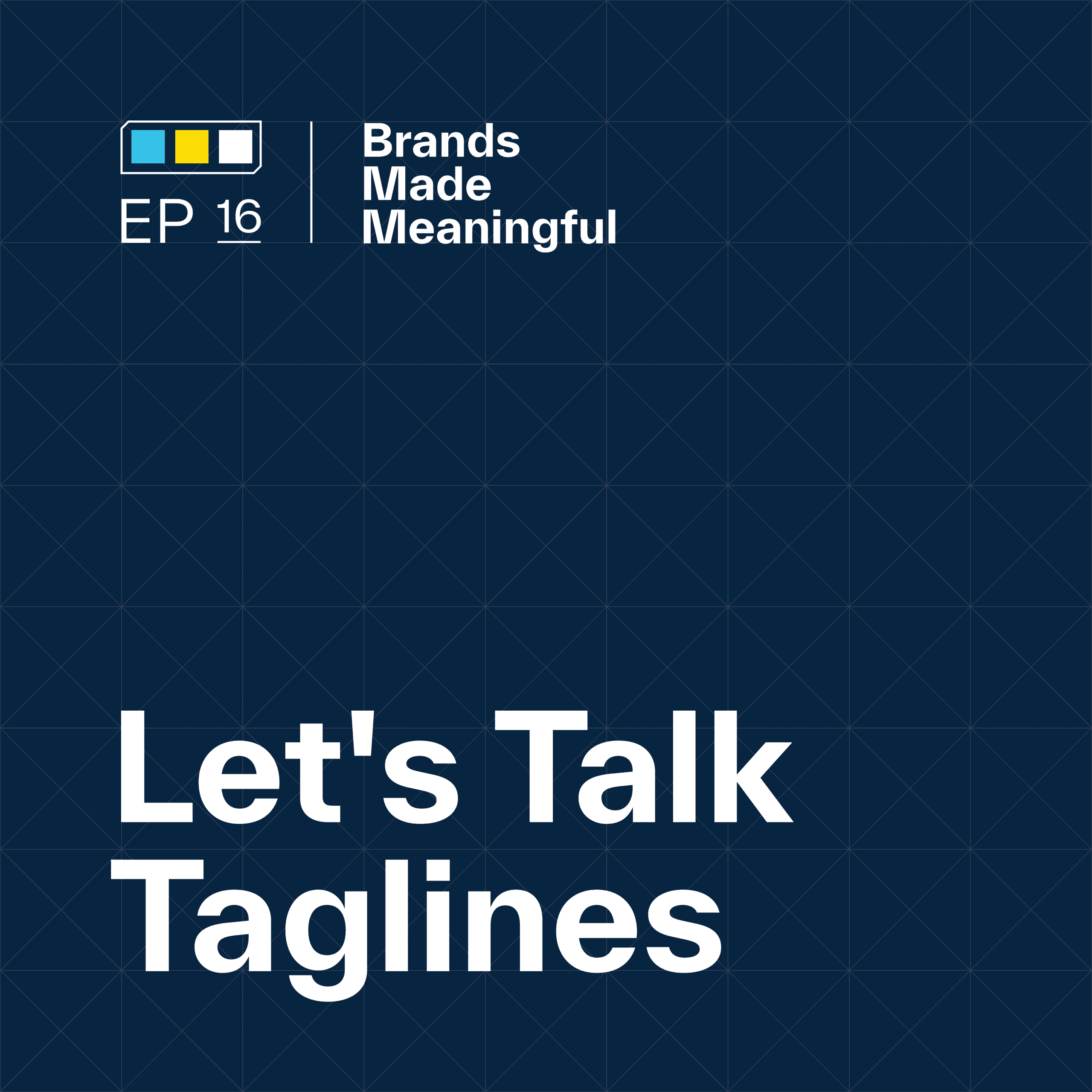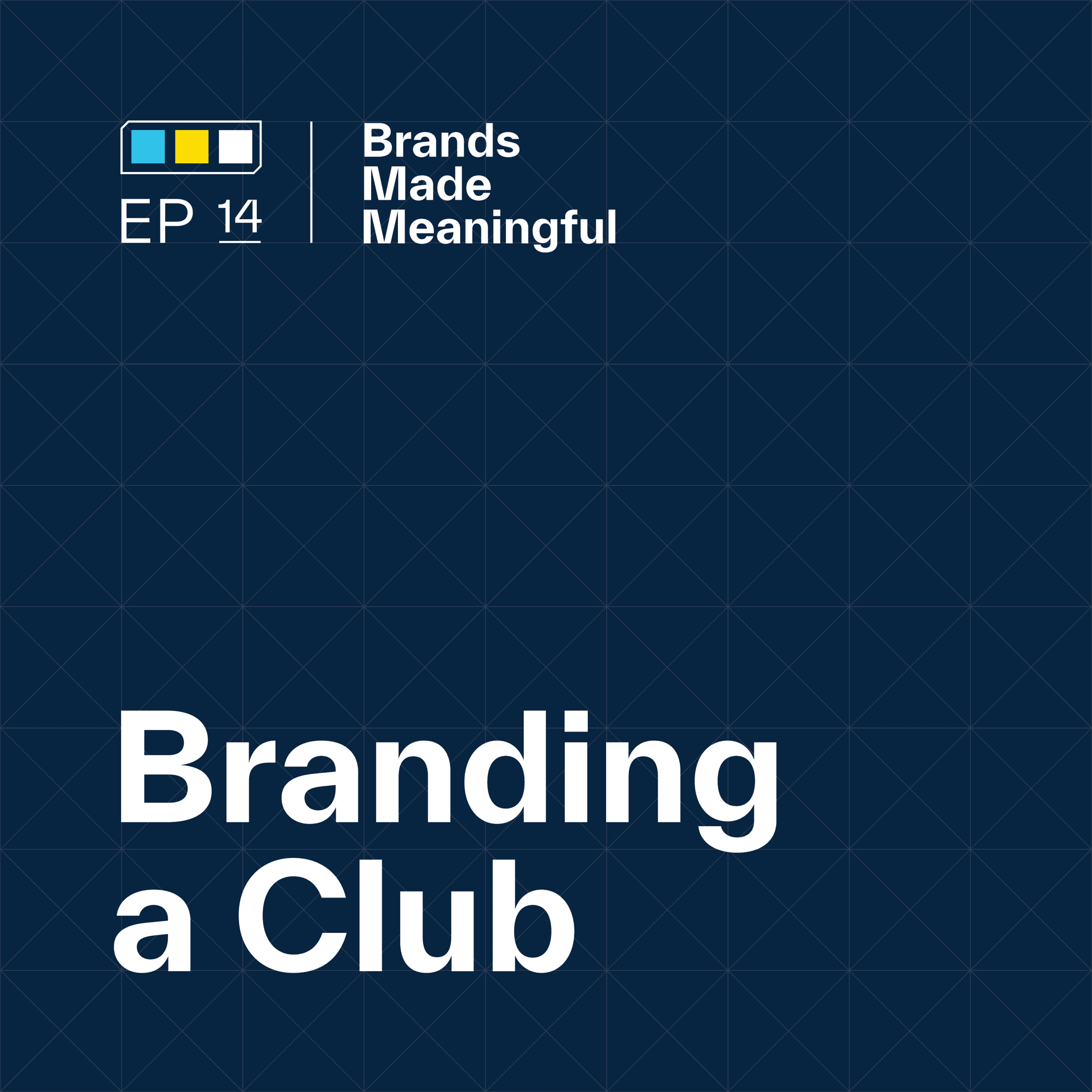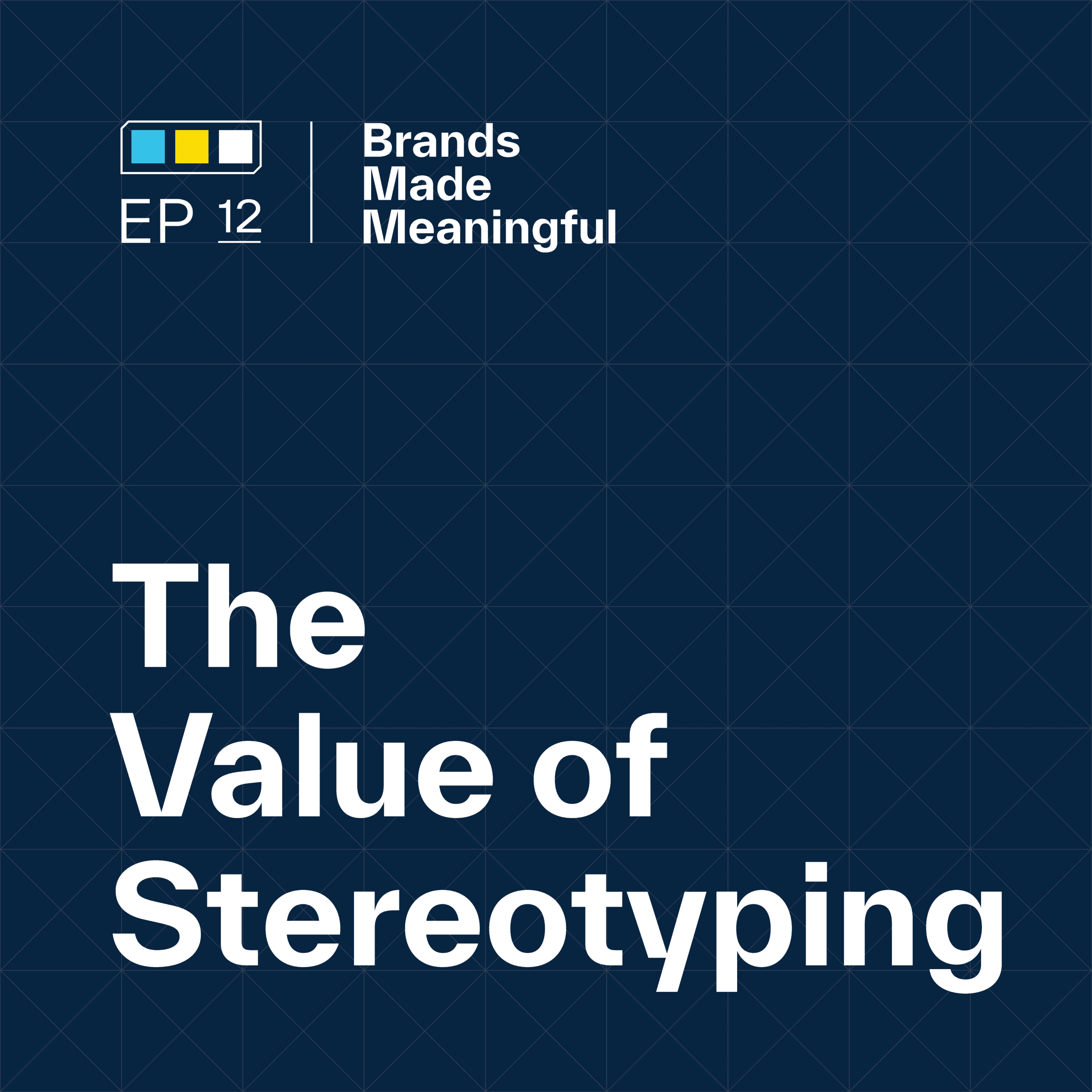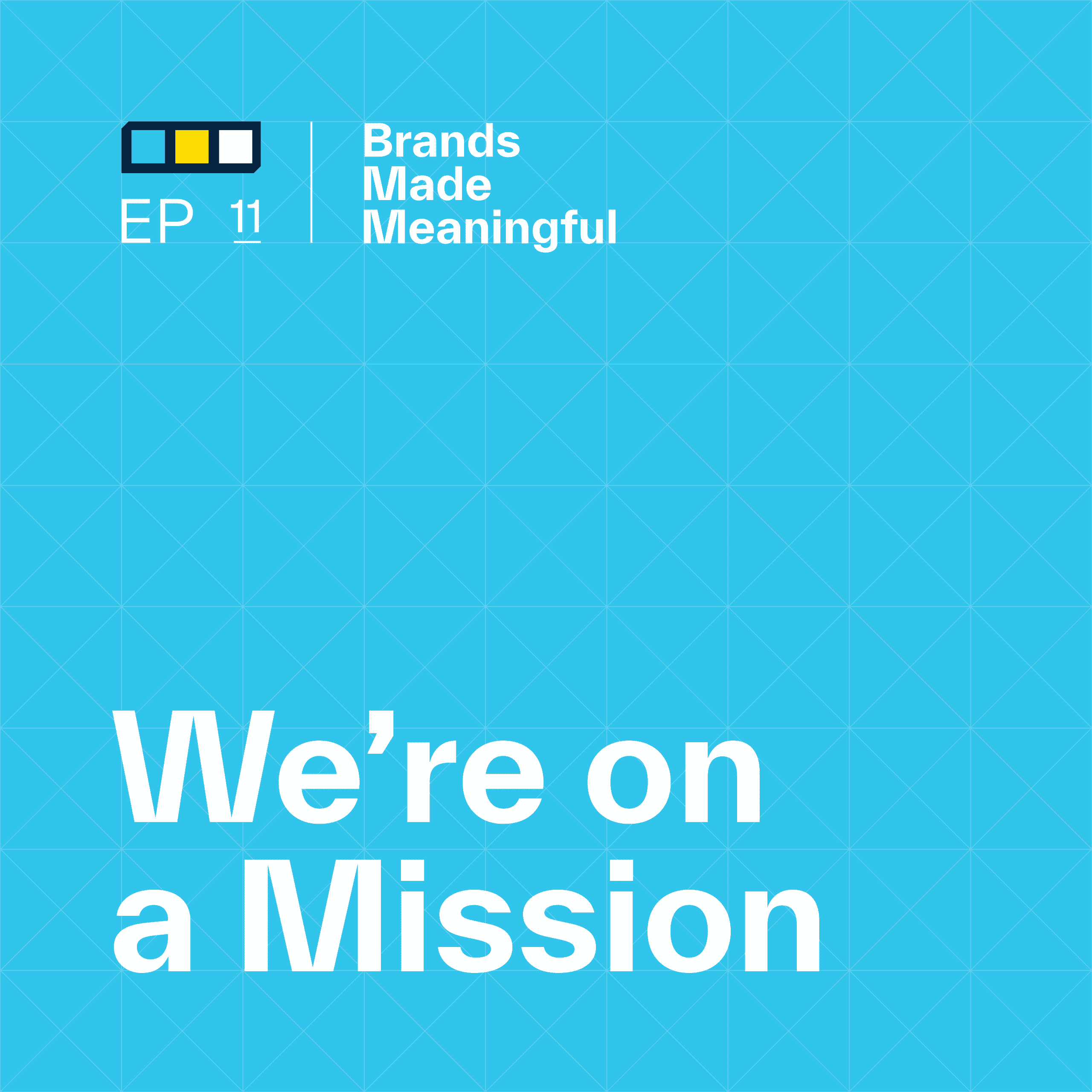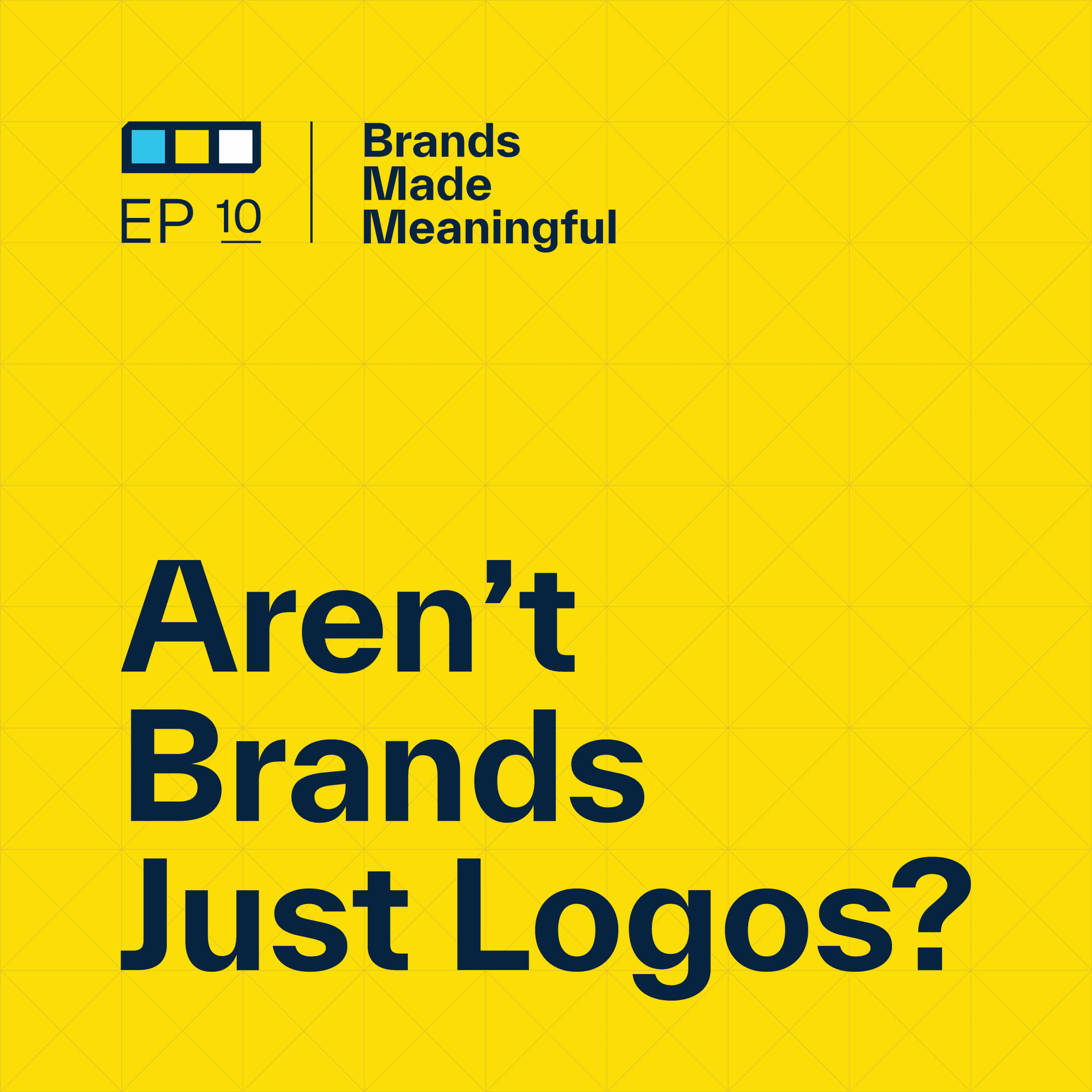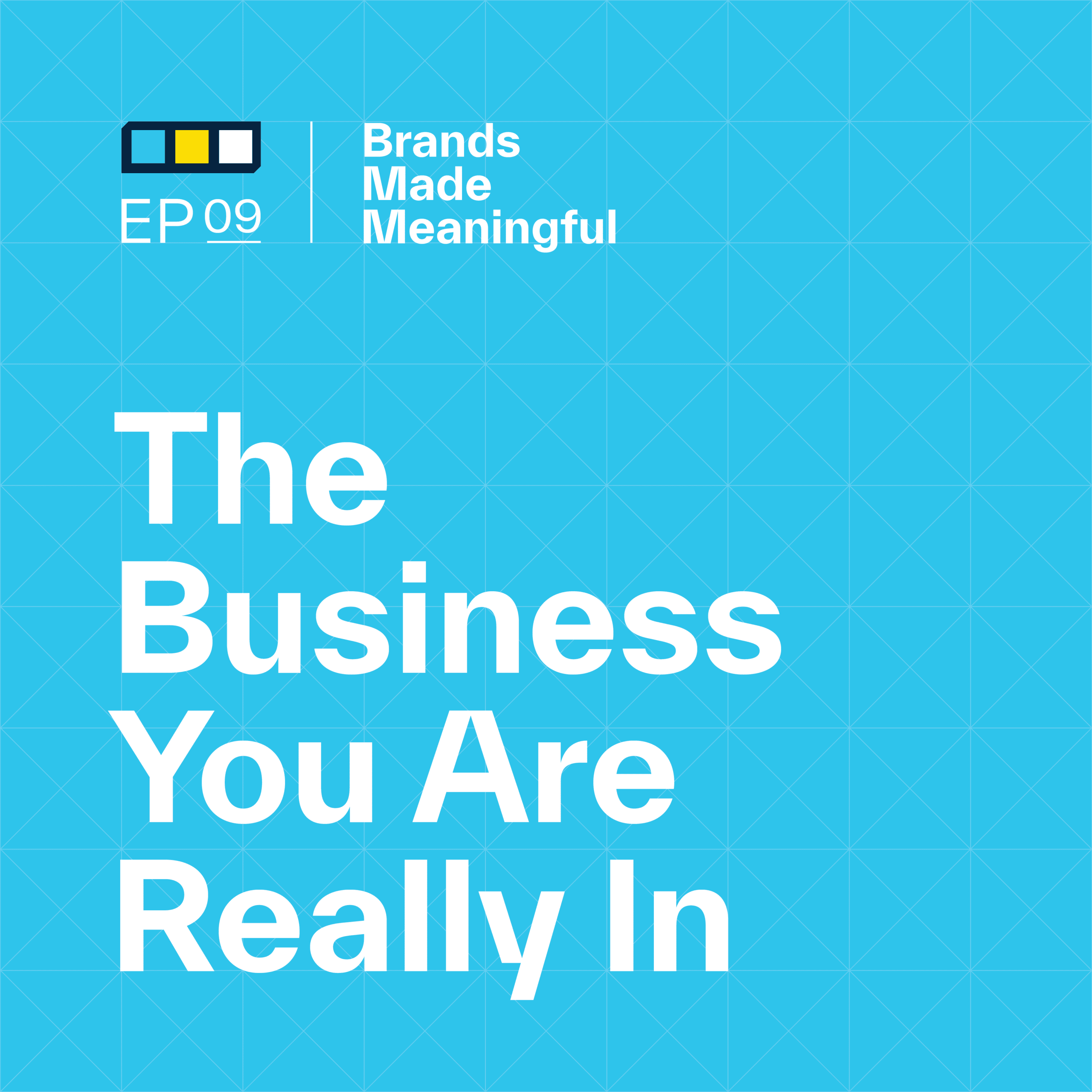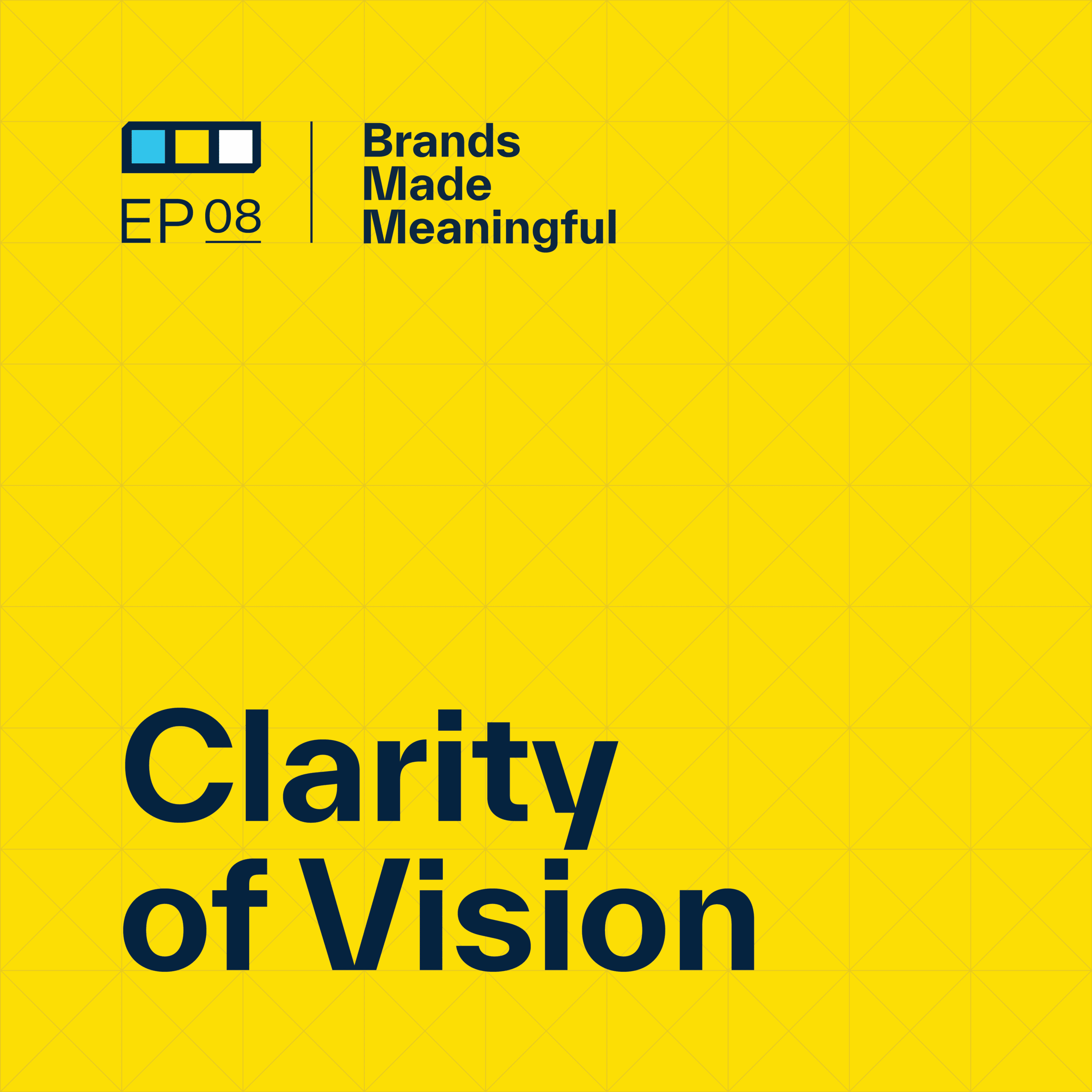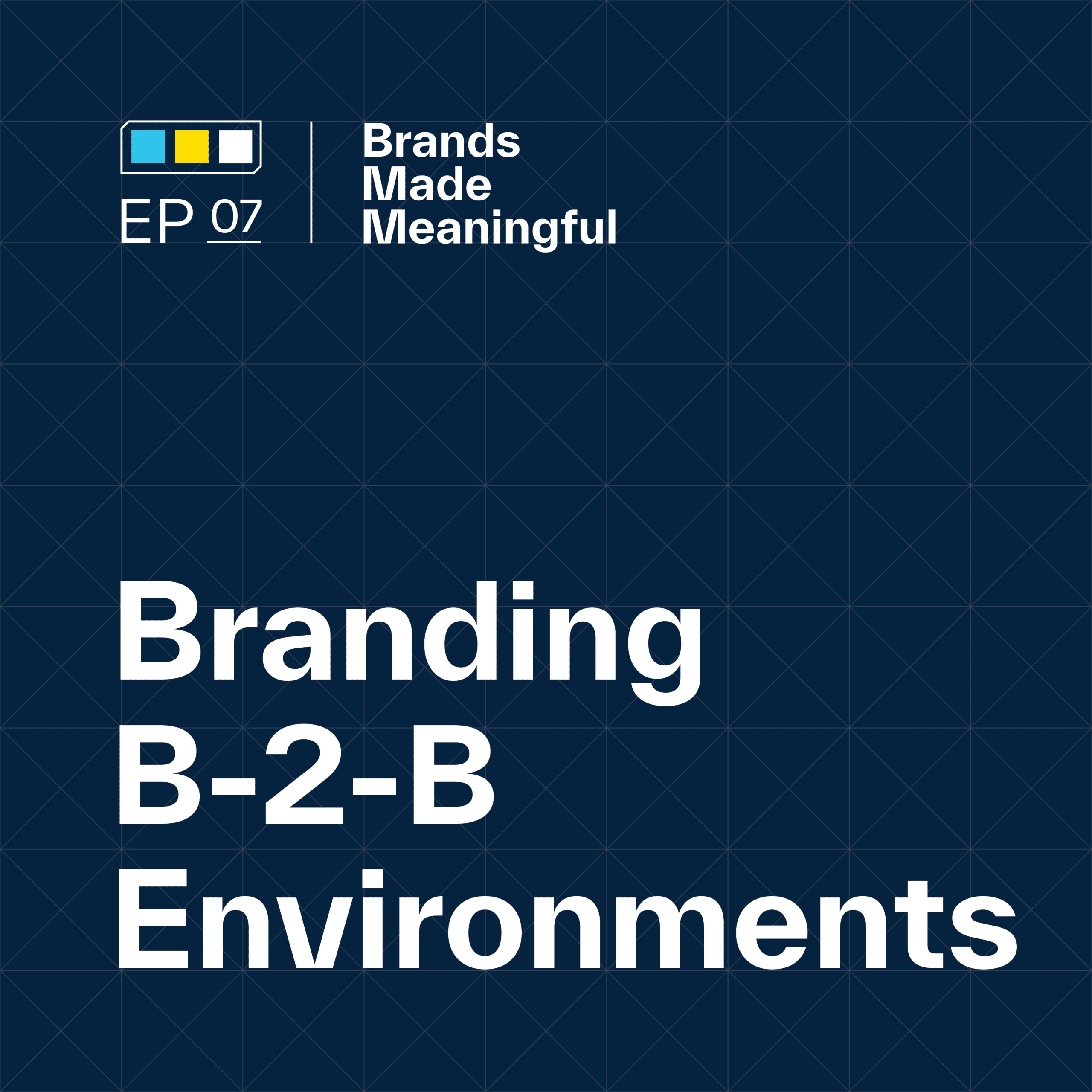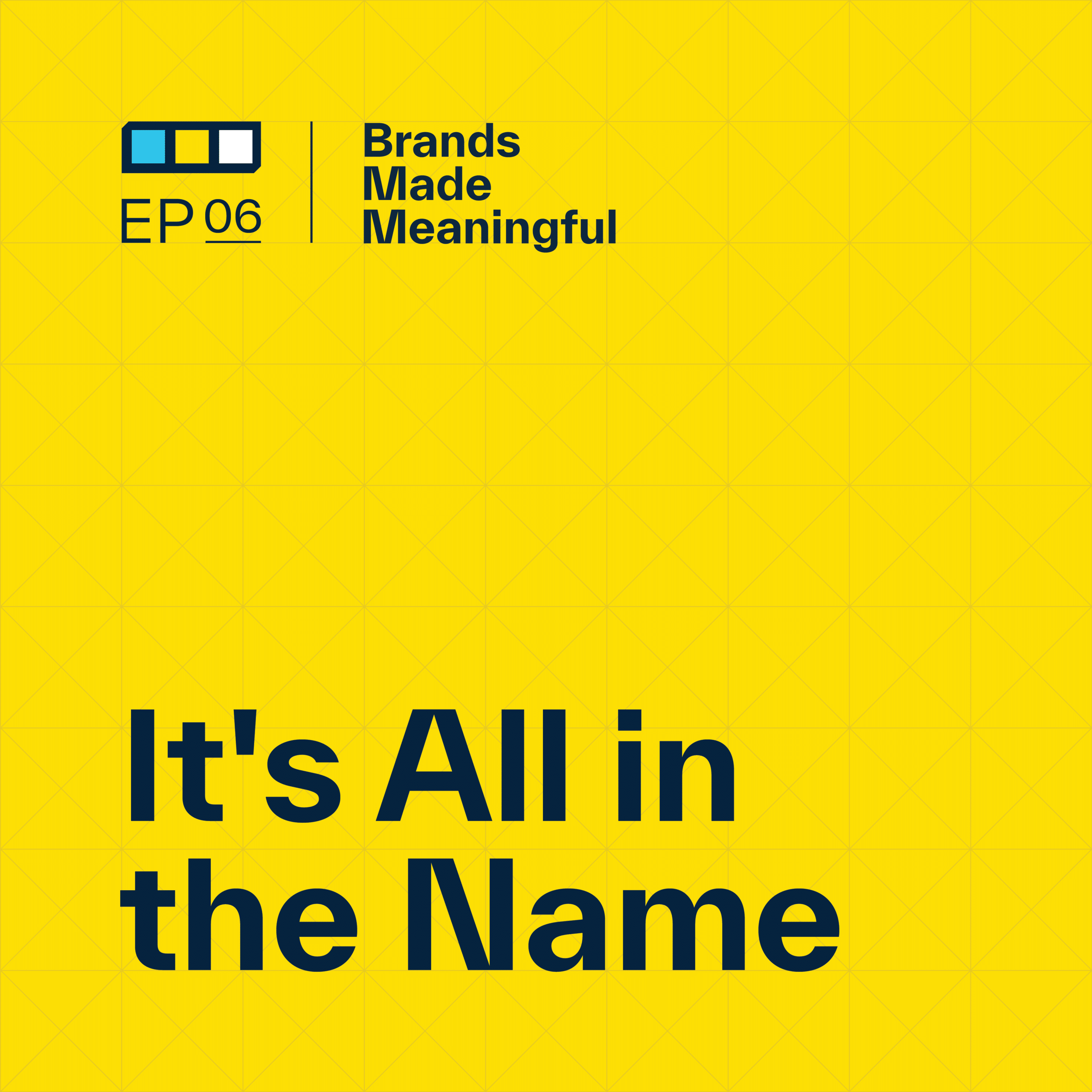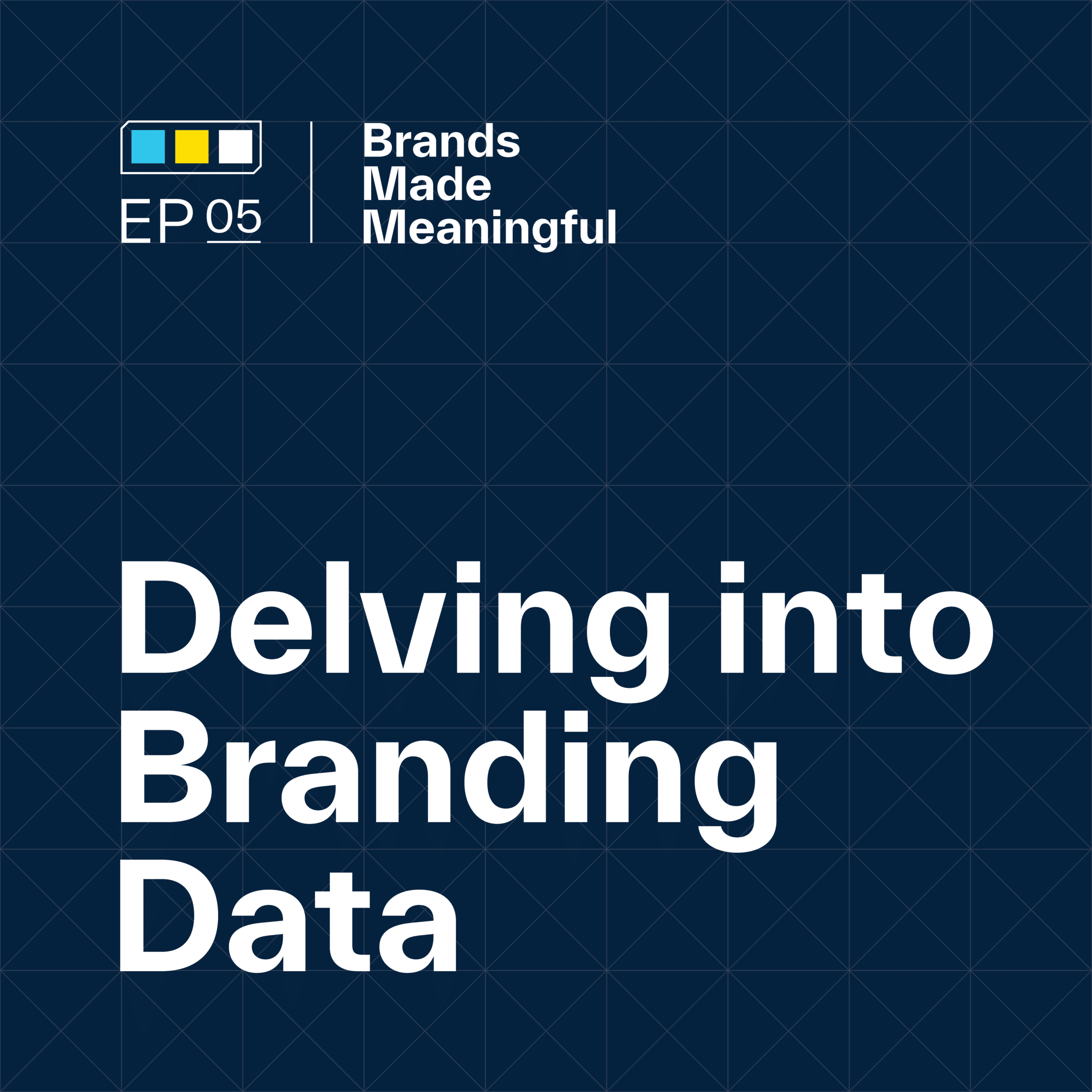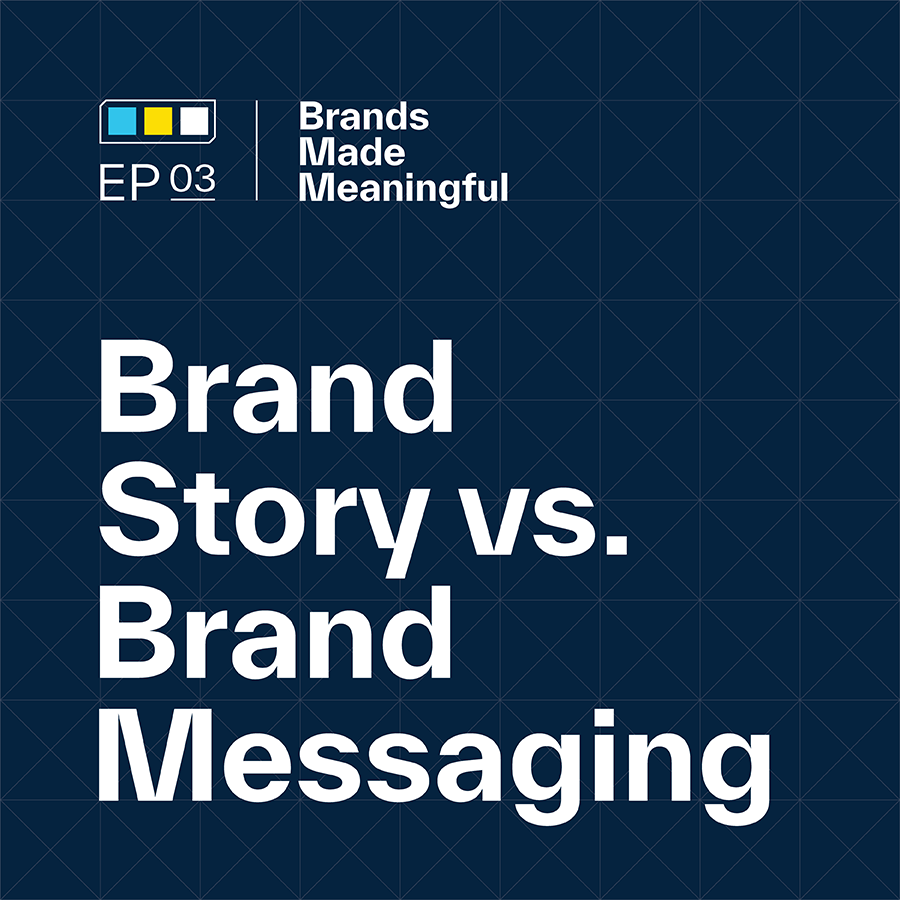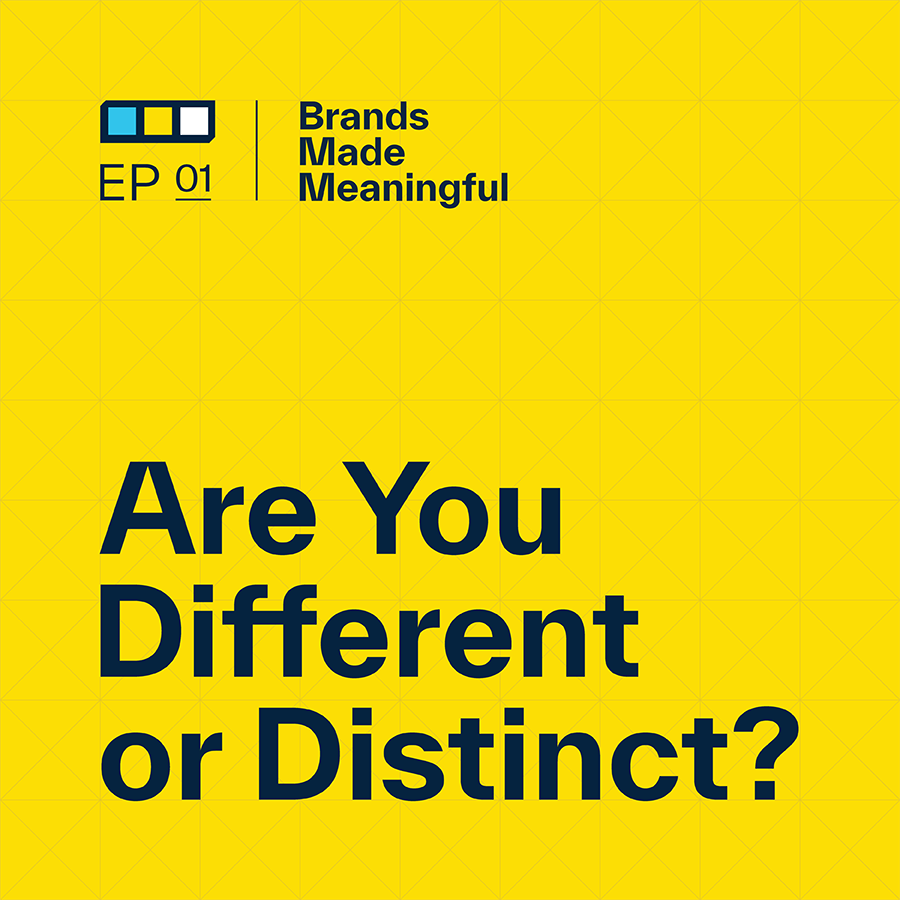EPISODE 33
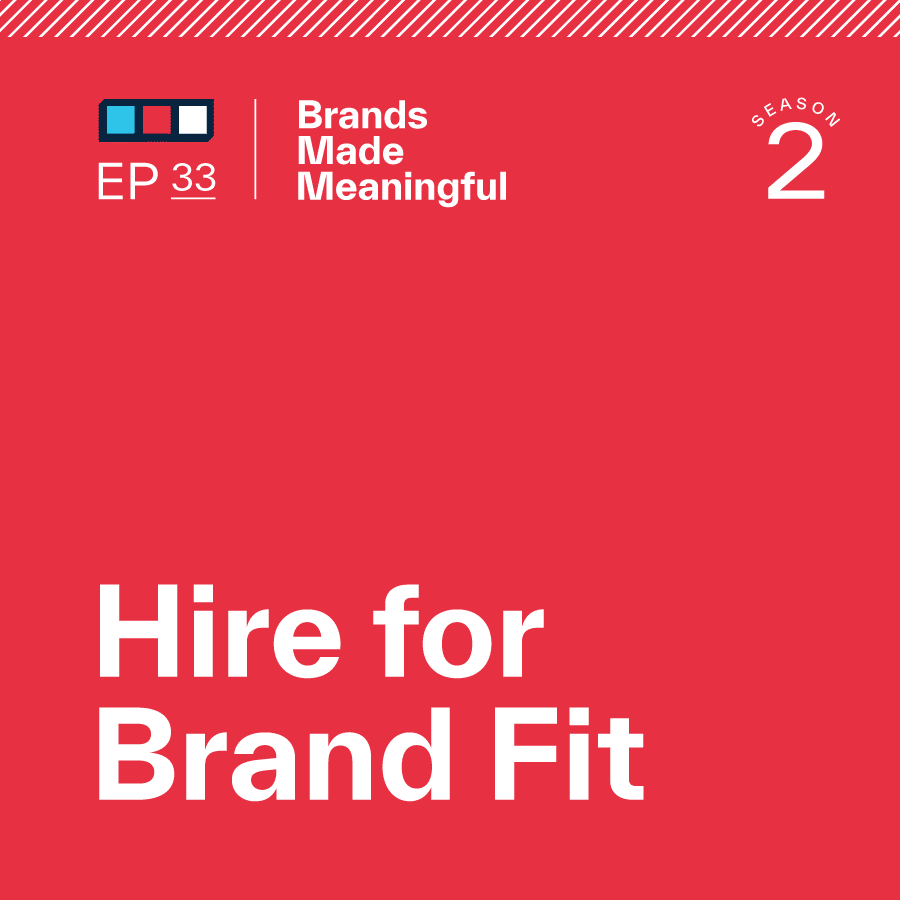
Hire for Brand Fit
Episode 33
Hiring people that fit your brand is key in order to maintain brand authenticity, positive culture, and consistent messaging.
EPISODE TRANSCRIPTION
…there’s just some sort of disconnect. Something doesn’t feel right.
Derek They don’t use the same language. There’s some sort of misalignment that oftentimes you can’t put your finger on right away, but you can sense it, you get it right away.
Expand Full Transcript
Tucker We had this challenge a couple of years ago. I think it was probably two to maybe two and a half years ago when we noticed this pattern happening. How does that work and how does it really reflect someone’s brand? We were working with a client at the time that really wanted to have their people represent their brand inside and out, their service, their customer service, and their salespeople. How do they all represent their brand? And I think that was a great challenge a couple of years ago for us to go, We need to build some kind of thought process or system to help our clients hire for brand fit. And that’s what we’re talking about today – figuring out how you can take your brand and make sure that it’s a part of that culture, that process of onboarding people, making sure they understand what’s expected from them from a brand side. And so that they understand, Here is our brand, here’s what it means, here’s what we need from you to live it and to grow it and to amplify it out into the world.
Derek So let’s give a little context. I think this falls under an umbrella conversation that we had a few episodes ago around living your brand. What does living your brand look like? We do all this branding work, which has an ethereal application to it. And a lot of people say, What’s the tangible aspect of this work? And we’re not talking about the tangible aspect of logos and colors and photography and taglines and some of the tactics that people associate with brand and branding. We’re talking about brand foundation.
Tucker What we’re really talking about is perception. If brand is how you’re perceived, we’re talking about how people fit into that equation. How do the people in your organization contribute or not contribute to the perception that you want or maybe the perception that you don’t want? And that’s a critical point. We can do all the great things that you’re talking about. We can make the logo look awesome and we can have great taglines and we have a great website and we can have great marketing materials. But if our salesperson is not coming off the same way, maybe they seem a little scummy or maybe they just seem unengaged, that’s not going to help us with completing that brand experience. And so that’s really this critical piece that I think a lot of people don’t think about because they think of brand as what you’re talking about – the other components.
Derek Especially people that operate on EOS or Traction. You’ll hear or have read some of Jim Collins’s books. You’ll hear them refer to having the right people on the bus or having the right people in the right seats. And when a lot of people talk about finding the right people, they’re talking about core values. And we’re layering an additional component onto that, which is perception and reputation. Hiring people with the right core values is absolutely the right way to do it. But if we dig in one more level to getting the right people on your team, having the people that will represent your brand for you and positively, that’s what we’re talking about.
Tucker There’s also a level of culture that gets thrown in there. I think we don’t love to use the word culture a lot, and when we do, it’s very sparingly. But the culture aspect of it is a big deal. I think that’s kind of a buzzword now to say, Oh, our culture is this. But for us, culture is really about how we behave. How do people behave with each other? How does that make a difference? And for us, that tells a lot about what brand you are and what you believe in, and how you behave. So let’s just dive in really quick. So why does any of this matter? Why does hiring for brand fit matter to anyone? I think it just goes back to the idea that a brand is way more than the logo, the tagline, or the visual communication that you’re doing. It’s the sum of all of the customer perceptions of your company. That means that when a customer deals with a customer service rep, that has a direct relationship to how they perceive your brand or how your salespeople are selling them. That is an absolutely direct relationship. And I also go into internal ways. When someone gets hired and people interact with them in a certain way in the lunch area, that’s a reflection of how they see your brand, too, whether they’re an employee or a customer. For us, it’s an audience. So we try to figure out how we can best create a perception for an audience.
Derek There’s a note that we have here in front of us as we’re talking through this that really stands out to me. It’s creating, creating might not be the right way to phrase it, but it’s authenticity. And it’s authenticity in the way that people interact with each other. And culturally that can be skewed to how your teammates act with each other. But we’re layering on to customer perspective, customer partner, vendor, and people that are outside your organization’s walls. We’re looking at making sure that those interactions are also authentic to your brand and what it is that you’re working really hard to foster and nurture.
Tucker You just hit on one of the key points.
Derek I’m jumping ahead.
Tucker Yeah, watch out.
Derek Love jumping ahead.
Tucker There are three key reasons why hiring for brand fits is really important. Derek just went into one of them. It’s really authenticity in customer or you could say audience interactions. It’s a critical component of having employees genuinely believe in the brand and its values and coming across within their interactions with customers that they truly do hold those same values and beliefs in place. And that’s really important. So if your company says one thing but your employees act a different way, there is a disconnect there and there’s this really weird, unauthentic feel between what you say and what you do. For us, that’s the biggest red flag that someone can have. Some other great ways that you can build off of these reasons for hiring brand fit is it positively impacts the company’s culture. It helps you understand what you need to be doing as an employee. We have a client that said this not too long ago. That’s really a great thing. How can you expect an employee to act a certain way if you don’t tell them how to act? And so if we’re doing a great job of not only hiring them for brand fit but also understanding that they are aware of what’s expected from them from a brand side, then we’re giving them the playbook to run the right plays versus not telling them what to do at all and being upset with them for not acting the way you thought they should. So if you do the right brand fit, they could positively impact the company culture. And then the third one is that you have consistency within brand messaging. So the way that you say things, it kind of goes back to authenticity. They believe the same things that you might believe. But if they are consistent with what we have said in the marketplace, here is the value that we bring to our customers. They also say that same value. So they understand the brand and they’re inspired by it and they go, Yep, I totally agree. Here’s our position, here’s what we’re about. They can have consistency in the way that they speak and then the way that the marketing materials also speak. Just generate this really great consistent wheel of positive momentum.
Derek I wonder how many organizations think about brand fit when it comes to looking at their teammates. I think I take for granted that people are hiring for core value fit. We’re working with an organization that’s been extremely successful, been around for 20-some years, and growing. They expressed to us the other day, in a conversation that we had with them, frustration in how to coach some of their employees that aren’t behaving in a way that aligns with their culture. And they admitted they don’t have the tools or they haven’t established what their values are or what their brand perception is. And so they don’t know how to have a conversation with this employee. What you said earlier is to say this is how we behave here and this is what I expect from you to appropriately live our brand. Maybe it’s because we work with so many companies on culture and our values that I take for granted that everybody’s worked on this. So there’s a little bit of an assumption on my part that people have taken the time to thoughtfully articulate the type of people and the traits that their teammates should have and the type of culture that they want to grow at that company.
Tucker It was a little shocking at the beginning when we started working with these people on how people live your brand and move your brand forward. A couple of years ago when we started working on this, it was shocking initially to say, Well, people just don’t think about this kind of stuff. But as we go forward, it’s almost reassuring. If I was any size company, I would feel a little bit better about it going, Okay, not even some of the really big companies that have lots of resources utilize this kind of stuff quite yet. And they’re looking at how to do this. How do we do this a little bit better and how do we move forward? So I think that at least eases some minds, at least when we talk to our clients, that they’re not overwhelmed by this. This is still something people need to learn and develop over time.
Derek And that’s exactly where I was heading with it. I think that it’s really, really common for somebody to start a business and go head down in what it is that they do and the product that they create and get really focused on the service that they sell, the thing that they’re good at. And you just sort of blink your eyes and all of a sudden a bunch of years have gone by and now you’ve moved into a becoming a second-stage company. You’re growing and you look back and go, Wow, I’ve really never done anything with my brand. I haven’t taken the time to think about it. I was growing so fast and hiring people so fast. I needed people. I didn’t have time to stop and think about all this mushy stuff, core values, and cultural fit. So I think it happens more often than not that it’s just a normal part of the business. So when you get to that point and you start to run into some of these challenges, like this company that we’re working with is starting to run into, it’s time to go, Okay, this is why this is important, because of the impact that doing this the right way now will have on our culture, on how we interact internally and externally. And in that result that you just talked about, which is this brand messaging and how we talk and how we speak and how we articulate how it is that we look, act and sound to continue to reinforce and build trust both inside our organization and out.
Tucker Let’s explore some red flags, some symptoms, and some warning signs that you could see within these. And I think that across this whole conversation, you’re going to start seeing a lot of the same themes come up, whether it’s benefits or challenges or how you can actually start doing this a little bit better. It kind of hits on the same thing multiple times. There are three that I had really highlighted as ones that we’ve seen from an insider perspective of going into an organization and talking with people. Part of our process is interviews. We do internal interviews with people. We talk to managers, we talk to high-ups, low-downs, and any kind of employee that you could put us in front of. We talk to them and say, What do you think? What do you think about all these brand things? How does this all come back? And these are the three that I think really stand out for me. One is that people are misaligned with the values and beliefs. This is similar to what we had already talked about, but it’s just that they fundamentally don’t agree with the brand values and beliefs. That’s a big red flag. If they do not, as a person, agree with the values that you agree with as a brand, then you probably don’t have a good brand fit.
Derek And it’s okay that this person believes other things. It’s just that there’s going to be another organization and another role somewhere else that’s probably going to be a better fit.
Tucker A better fit. We talk a lot about doing this type of work and having a reason for people to self-select in or self-select out, and that’s a key part of it. If you have values that they do not value, then they will probably self-select out – or you would hope they self-select out. The second one is they lack a passion for the brand. This is something that’s interesting to me. When someone’s really a great brand fit, they love their brand and they love all the components of it. They love the messaging. They love the way it looks. They love the reasons why they do certain things. They love their value proposition, and they’re really inspired to move it forward. And you can just tell when you talk to them about it. We had a client, Game One. We worked with a lot of their teammates, but at the very beginning when we were working through the brand, you could tell that they had a passion for it. They were talking about it in a way that was very inspiring and moving through complex challenges by saying, Yeah, this is what we would do as our brand. They’re like when you have a kid and they start understanding something, they connect the dots before you can even get to that challenge. I think that’s where you start seeing these great passion-filled moments of brand.
Derek And that passion turns into, What if we did this? What if we went there?
Tucker Inspiration.
Derek And it grows it. It builds it. And they’re inspired to take it on and make it their own and grow it. And having those guidelines in place nurtures and fosters that so that they’re also then growing that the right way.
Tucker And that becomes difficult with bigger organizations. When you have more people at the table, it’s harder for you to have people that are all inspired to do it. But that would be the goal. You sit down with your team and let’s just say it’s the marketing team. Everyone’s sitting down. They’re super inspired about their brand, knowing how to move it forward, wanting to move it forward, some of those things. But if you don’t have that, then that means there are people on that team that are probably a poor brand fit.
Derek They might not believe in where you’re going. They might just not be passionate people. And there are people that aren’t expressive and don’t have the ability to express passion but still be absolutely on board and aligned in their own, maybe more introverted way. People don’t have to necessarily be running around waving their flag so to speak, but there are ways to tell when they’re lacking, when they actually don’t care.
Tucker The third one is they just have the inability to embody brand traits. So the example that I have with this is, let’s say Patagonia or something, and one of your brand traits is being environmentally conscious but they keep making decisions not based on that at all. It may be it’s the opposite. And you start seeing these things that they just don’t have the ability to embody that trait that your brand has. So think of a brand that’s all about innovation. Well, if you’re worried about moving the brand forward or you’re worried about changing at all, that means that you have a hard time with innovation. So I think the inability to actually embody the reasons why your brand is great can be a really big challenge for a lot of people, especially if they’ve been there for a really long time. And we see this a lot when we do brand refreshes. When you come back and you say, Hey, the brand’s been about this for 15 years and customers want this, employees now want this, and this is how it is. And now we’re going to realign what this brand is all about and change the direction a little bit. And people who have been there for a decade or two aren’t used to that. And they start reverting back to the old brand. That’s where you start seeing these challenges. They might not be a good brand fit anymore.
Derek There’s an ability because somebody inherently doesn’t have it in them and it doesn’t align with themselves and their own values. There’s also an inability by choice, by somebody who says, I don’t agree with, I don’t like or I don’t fit with where this is going. It’s back to that self-selection piece. Somebody whose own self-interest, which we all have in our own roles, in our own advancement, in our careers, if their self-interest does not align with the interest of the company, that’s absolutely a flag.
Tucker If we’re talking about symptoms and red flags, customers can tell when someone isn’t a good brand fit and the really good customers, especially if you’re in a B2B world, will tell you when someone’s not a good brand fit.
Derek I had it happen. I received a phone call at night one time, a long time ago when I was first starting out, from a customer that I had worked with for quite a while. And I brought a teammate on board who was interacting with that customer directly. And a couple weeks or months later, I got a call from the customer at home basically saying, What’s up with this person? He basically verbalized and vocalized all the feelings that I had in my gut. But at that time, we were young enough in our organization that we hadn’t established what we were about and what we stood for. And we were hiring people based on their professional skills, not on brand fit. And this client who knew me well, who I’d worked with for several years at that point, saw it way faster than I was able to.
Tucker Some of our most successful clients within the branding space have taken this stuff, and they’re doing exactly what you’re doing, saying, Yeah, it’s important that you have the professional skills to do some of this stuff, but it’s more important that you have the cultural fit and the brand fit. And if you believe in where we’re going and you believe in what we’re trying to do, I can teach you all that stuff. I can teach you how to do project management or whatever it is. But what you can’t really teach is the values and beliefs. That’s a hard thing to teach.
Derek There are things that people are inherently hardwired in and can’t change or don’t want to change.
Tucker Just don’t want to.
Derek And that’s okay.
Tucker So how can this be solved? Let’s just move a little bit towards here’s a bunch of problems. How are we going to solve this? We have a client come to us and they go, Wow, I just don’t know, maybe I’ve got problems within my culture and my people and all this other stuff. And what do we do to start looking at that?
Derek Like we started to say a little bit before in the component that I learned the hard way just in the aspect that we take for granted that you need to start by clearly defining your values, your beliefs, what good behavior looks like, and what good behavior sounds like. You know, it sounds like we’re talking to children in elementary school. What we mean by behavior is, how do we talk to each other? How do we celebrate with each other? How do we work with each other? What’s the culture, the vibe, the attitude, the language, the level of respect that we show for each other? Are we casual or formal or what is that right thing for you? But you have to lay that out. You have to decide.
Tucker I think that we’ve been saying a lot of values and beliefs and values and beliefs and all this other stuff. But it’s not only defining your values and beliefs. We had this exact thing happen last week with a client showing them work and showing them the way forward. Here’s how we think we can move forward. And the questions that came up pointed to the fact that the people did not agree with the vision of the organization. And that’s the same thing with values and beliefs. If you do not agree with the vision of an organization, then that’s another big red flag. Either the vision isn’t clearly defined enough, like where you’re saying define your values and your beliefs. And I would say define your vision – if either it’s not defined enough or the people in that role just aren’t a good brand fit because they see the organization as something different than the way everyone else sees it. And that could be a good thing and a bad thing. That can help challenge people to think bigger. But if that’s an outlier, that kind of messes with everybody’s situation. If they see it one way and everyone else sees it a different way and they’re in a leadership role, that can really change the dynamic of getting things done and being really productive. And it can also change the trajectory of a lot of these projects.
Derek That’s a big one. People use the word mission and vision interchangeably and they’re really fundamentally two very different things that when done right, work together with each other. But if a mission is a little bit more measurable short term and it’s a thing that we’re trying to do, people can be on board with that. But if you don’t know the vision of the organization of what this place actually stands for, where we’re going, and what we’re all about, people will create their own versions of it.
Tucker And just like I said before, the bigger the organization is, the harder that is to wrangle in because there are a lot more people with a lot more opinions of what’s possible and what’s not possible. So that’s a big part too. So define all of those things. Define your values, define your beliefs, and define your vision. If you haven’t done those things, as I said earlier, it’s hard to expect something out of everybody if you have not given them the rulebook, the playbook, to understand how they should be playing the game. The second way that we would start to really deconstruct this problem and probably solve it is to assess culture, assess the way that you are building culture, and assess the way that you guys are fitting people into culture. So during the hiring process, don’t only assess the skills and qualifications that people have, assess that they’re a cultural fit. How do they behave? How do they interact with people? And then also do their brand fit how do they believe and what do they have the perception to do? And then how would they move the brand forward? So I think that there are questions you can start building into that hiring process that make it easier to understand if someone’s a brand fit or not. We work with people on that a little bit to say if this is the perception we’re trying to create, ask these types of questions to see if they understand what the perception that they should be doing is.
Derek And it helps to have additional team members in some of those conversations. So maybe it’s not necessarily just HR who’s doing the interviewing process, but somebody else who is a good brand fit, somebody who is what we would refer to as a brand ambassador inside that organization who you think is a really strong representation of somebody who’s living your brand the way that is really helping your organization crush it as they move forward, have them sit in on some of those conversations. Do they’ll be able to assess pretty quickly whether or not this candidate is a fit or not.
Tucker As a complete tangent on this. The reason for what we’re talking about right now at the beginning of all of our kickoff sessions is we’re going to start this branding process, we’re going to redevelop ourselves. And people go, Okay, who do you want in the room? This is why we want everybody in the room that is a leader within any department. We don’t just want the marketing people in the room. It’s really important to have your HR leaders in the room, to have your operations leaders in the room, to have all these people coming together. Because brand is so much bigger than just marketing. In our minds, it’s the way that everything is perceived. It’s the way that everything interacts with each other. So think about that next time you have a conversation about brand, who should be in that room. It shouldn’t just be the CMO and the CEO talking about what they should be in. They shouldn’t be for customers. It should be them plus the people who are working with the everyday culture. How do they build together? How should our employees interact with each other? If our brand is changing for our customers, it’s changing for our employees too. So just be mindful of those kinds of balances.
Derek Those are the people that are on the front line, so to speak. Those are the people that are engaging with your vendors, partners, with staff. Those are the people that are affecting this on a day-to-day basis. And to engage them and include them is critical.
Tucker All right. Back to what we were talking about. How can we solve this brand fit problem? The third way of doing it would be evaluating brand talent. I think it’s interesting to say brand talent. To some people that doesn’t really mean anything, but to others it means they’re really good at creating perception. Really good at it, whether it’s people in a sales role who can do a great way of selling someone in a certain type of way, whether they’re a customer service person or whether they’re on the accounting team and they interact with people every day, and when someone asks them for an accounting question, they give it back in a way that you’re really happy with. You’re pleased with the way that they represent you. So the way that I would look at this is what If that person was a spokesperson for our company? Could they potentially have the talent to be a spokesperson for our company? Would I be nervous if they went to a dinner party with our top client and they talked about what we did? And if they did that successfully, then I think they have all the brand talent in the world. They understand what we’re all about and they could tell people about it. Then I’m happy with who they are within our organization. And I know that’s a generalization. Not everyone can be a spokesperson just because not everyone has the ability to stand up and be an evangelist for our brand. But if they understand, that’s where I’m getting at, is if they get it, if you tell them in the hiring process, here’s what we’re all about and this is what this means. And they go, Oh, okay, I understand. So you guys are about this. That’s a great way to start assessing if they can connect those dots and understand what’s going on.
Derek Think about the person who sends invoices for your company, your controller, your accountant, your bookkeeper, and think about the interactions that he or she has with somebody who is maybe behind on paying their bills or hasn’t paid their bills or that you’re concerned about isn’t going to pay their bills. Think about how you would like that controller communicating with that person, not only to get your money but in a way that also reinforces your brand, your culture, and your reputation. Every single touchpoint inside the organization, for sure, but anybody that gets interacted with outside the organization is experiencing your brand.
Tucker The final one. If. If you have a problem with brand fit, you may not need to fire everyone and clear the land of all vegetation. I think you could do some training and develop people who are ambassadors internally. When people go out and they go, Well, people just don’t understand our brand or it must be our brand that’s wrong. That’s not necessarily the case. You might just not have explained it to anybody. It might be defined. It might be great. It might be in an awesome book that’s locked away in the CMO’s desk or something like that. Brand is something that needs to be checked up on. It needs to be something that needs to be trained. It’s something that is constantly being used by marketing people, constantly being used by customer service people. And we don’t do enough of the training that’s required. I think people do training for their job to try to be better at what it is leaders do, training to be better leaders. But people don’t necessarily initiate brand training internally. And I think that that could be a really big pivot point for them to start giving people the playbook. If we have a Sussner playbook of how we interact and do all this stuff and no one ever gets told, we cannot expect anything from them that’s positive. We can just hope that they do something positive. So there’s this level of how we build a training program. How do we help people understand all of this and roll it out to them in a way that’s meaningful?
Derek And if you don’t know how to train them, find those brand ambassadors and ask them. Engage them and say, What does working towards where we’re going with our brand, what does that look like to you in your role and with your team? To even flat out say, Hey, if you were in my shoes, if I’m the CEO or the CMO and I was in charge of this, if you were in my shoes, as somebody who I think exemplifies what this brand is all about, what are some ways that you would engage the rest of our team to keep this going? Because they’re the ones that live it. And if you find the ones that really live it and breathe it and truly are those brand ambassadors, they can also help in that ongoing development and training with you.
Tucker We’re wrapping up now. I’m just going to transition into that. It would be really awkward pushing that way.
Derek The polite way to say, You’re cutting me off.
Tucker Yeah, I’m done with this conversation. I think that brand fit is a really interesting challenge for a lot of people, and I think it’s actually a great key for a lot of problems. We deal with people all the time, with our clients, saying, We’re running into this challenge and it just feels like it might be a disconnect – this person and this person fundamentally disagree about this direction. But the more we talk to them, the more we understand, they’re normally saying the same thing, but just in a different way. And if we start understanding the connection points we can make with our brand, with all these different people, I think that there are some problems that can be solved in an easier way than just saying, Well, that person doesn’t fit here, get them out of here. But if they were trained the proper way and if they were explained to, here’s who we are, here’s where we’re going, and here’s where we need your talents, you’d be surprised by how many people don’t just self-select out and just be like, Well, then I’m leaving. A lot of people are like, Okay, sounds good. Now I know where we’re going. Now I understand. Communication is so big that people just ignore it sometimes and just move forward without having it. But I think that as we move forward, the more we can build conversations across departments, across siloed organizations, and build something that’s more cohesive, we find it to be easier to build great brands and to build great organizations that do great things.
Derek And I think we should do this in a future conversation. But we should look at what this looks like every day in an ongoing way as an extension of that last point about training and developing. Because this isn’t a one-time thing. Once somebody has been hired and they are a great fit, it doesn’t stop there. That’s just the first step. There are ways to continue to foster it, to keep it going, to nurture it, to live your brand, and to not just set it aside and then let that new hire who is a brand fit figure it out as they go without the support from the organization.
Tucker I think that would be a good conversation. Let’s do it. But until next time, let us know if you have any questions. Give us a call. Have a great week. Have a great weekend.
Derek Thanks. We’ll talk to you soon.
Tucker Talk to you later.
More Episodes Like This
Building Brand GuidelinesEpisode 65
Derek and Tucker show us how to build infrastructure guidelines to unify your brand experience across the board.
Club Identity SystemsEpisode 64
Derek and Tucker cover what Identity Systems entail and how to discern between internal and external methodologies.
Navigating Branding With a BoardEpisode 63
Derek and Tucker bring clarity to uniting your company under one cohesive vision.
Putting a Committee TogetherEpisode 62
Derek and Tucker assemble your need-to-know facts when putting together your committee.
The Guiding Principles of Private ClubsEpisode 61
Derek and Tucker go over the top ways private clubs can find the balance between pleasing old members while attracting new ones, all while making moves towards the future.
How Color Affects PerceptionEpisode 60
Derek and Tucker cover how to best convey your business with color.
Brand EcosystemsEpisode 59
Derek and Tucker break down how to craft effortless experiences when considering your brand as a whole.
6 Types of Brand TransformationEpisode 58
Derek and Tucker dive into 6 distinct types of transformations for a wide range of brands.
Tournament Branding For ClubsEpisode 57
Derek and Tucker discuss designing and delighting your club members with tailored events.
Brand Promoters & DetractorsEpisode 56
Derek and Tucker discuss how high level promoters increase your NPS and how to turn the tides on your detractors.
The Loudest Voices in the RoomEpisode 55
Derek and Tucker talk about gathering feedback while prioritizing every voice.
Determining A Primary AudienceEpisode 54
Derek and Tucker discuss if and when you should be honing in on your audience vs. casting as wide a net as possible.
Branding For ExclusivityEpisode 53
Derek and Tucker discuss the intricate process of naming your brand.
Measuring Brand SuccessEpisode 52
Derek and Tucker discuss how we measure our success in branding and a few key KPIs that help us understand our impact.
Branding For ExclusivityEpisode 51
Derek and Tucker breakdown how brands can create the perception that they are exclusive and only for a certain type of consumer.
What Makes A Brand SurprisingEpisode 50
Derek and Tucker break down the Sussner formula that we believe leads to a surprising brand.
Breathe Life Into Brand TraditionEpisode 49
Derek and Tucker discuss the intricacies and common pitfalls of branding for Private Golf Clubs.
They Key of Visual DifferentiationEpisode 48
Derek and Tucker break down the importance of differentiating your brand on a visual level.
Branding For Private GolfEpisode 47
Derek and Tucker discuss the intricacies and common pitfalls of branding for Private Golf Clubs.
Dealing With An Identity CrisisEpisode 46
Derek and Tucker breakdown how to identify and remedy a brand's identity crisis throughout thoughtful and intentional brand management.
Branding vs MarketingEpisode 45
Derek and Tucker discuss the differences between Branding and Marketing and how to make the two compliment each other.
Build Your Brand's FoundationEpisode 44
A brand's foundation is a critical element in being successful in the long-term.
Building a Constructive Branding ProcessEpisode 43
Derek and Tucker break down the steps required to build the most constructive and meaningful branding process.
What Makes a Brand Relevant?Episode 42
Relevance is a key piece of a brand's identity for creating clarity and connection.
Your Right to WinEpisode 41
Derek and Tucker discuss the “Right to Win” and the odds of your brand's success within your target market.
An Intro to Sub BrandingEpisode 40
Derek and Tucker discuss the nuances of developing sub-branding and strategies.
Conquer Branding FearsEpisode 39
Derek and Tucker dive into how to overcome the fear of change and the nature of constant refinement of your brand.
Balancing Strategy & DesignEpisode 38
Great strategy is a necessary foundation for great design—and great design brings great strategy to life.
Branding PrioritiesEpisode 37
Branding priorities are the actions and initiatives that shape or enhance a brand's identity, perception, and market position.
Invest in Your BrandEpisode 36
Investing in your brand benefits your company as a competitor in the marketplace, builds trust with customers, increases perception of quality, and drives employee engagement.
Why is Positioning Scary?Episode 35
Narrowing the brand's position is really a strategic decision to focus the brand's offerings, messaging and target audience on a specific niche or segment within the market.
What Are Brand Consultants?Episode 34
Derek and Tucker discuss the importance of hiring expertise with a wider breadth of knowledge than just visuals.
Hire for Brand FitEpisode 33
Hiring people that fit your brand is key in order to maintain brand authenticity, positive culture, and consistent messaging.
Your Brand’s Stance MattersEpisode 32
Your stance can help define your brand from a core level and make branding, hiring, and marketing not only easier, but more meaningful.
Levels of Executing a Brand RefreshEpisode 31
If you have a brand strategy in place, how do you execute it?
The Role of Features & BenefitsEpisode 30
Derek and Tucker discuss the importance of features and benefits within the context of branding, selling, and marketing your products and services.
Should You Listen To or Lead Your Customers?Episode 29
Within the challenge of any rebrand is the challenge of managing customers' perception of change.
Managing a Brand TransformationEpisode 28
Episode 28 discusses the highlights and challenges of rolling out a new brand, both internally and externally.
Living Your BrandEpisode 27
Your brand is not this shiny trophy on the shelf. It is something that you are molding every single day.
What Makes a Brand Authentic?Episode 26
Season 2 starts off with a discussion about building authentic brand experiences, both internally and externally.
Reviewing your Competition's CreativeEpisode 25
Derek and Tucker discuss the process of reviewing your competitors' creative strategy to better position your brand within the market.
Interviewing your Audience for InsightsEpisode 24
This episode details the process and benefits of interviewing your audience as part of the branding process.
Assumption ReversalEpisode 23
Derek and Tucker discuss how we change our thoughts and get into a different mindset to refine and revise our branding.
Developing vs. Amplifying a BrandEpisode 22
Another way to say it is, development is building and crafting your brand story, and amplification is then telling it.
Refreshing a Sporting Goods BrandEpisode 21
This episode shares the steps behind Sussner’s work in refining the Shock Doctor brand.
Defining PerceptionEpisode 20
Derek and Tucker discuss the positive and negative impacts of brand perception.
What is a Brand?Episode 19
Derek and Tucker discuss what defines a brand and what makes them successful.
Branding Golf Courses vs Golf ClubsEpisode 18
Derek and Tucker further hone in on golf course design.
Refreshing a Golf CourseEpisode 17
Derek and Tucker discuss the bar for golf course design – and how to push past it.
Let’s Talk Taglines Episode 16
Derek and Tucker talk taglines in today's episode.
Refreshing an Athletic DepartmentEpisode 15
Derek and Tucker sit down today to discuss what logos mean within branding.
Branding a Club Episode 14
Derek and Tucker discuss how to brainstorm branding a club.
An Intro to Internal Branding Episode 13
Derek and Tucker discuss the power behind internal branding.
The Value of Stereotyping Episode 12
Derek and Tucker sit down today to discuss the meaning of stereotyping within the branding world.
We’re on a Mission Episode 11
This episode digs into the rallying cry for the greatness your team is going to accomplish.
Aren’t Brands Just Logos? Episode 10
Derek and Tucker sit down today to discuss what logos mean within branding.
The Business You Are Really In Episode 09
Derek and Tucker sit down today to discuss how to discover what business you are really in to better understand your mission statement.
Clarity of Vision Episode 08
Derek and Tucker discuss the importance of looking ahead towards the big picture to better hone the purpose behind what we do in the now.
Branding B-2-B Environments Episode 07
Derek and Tucker discuss the Branding of Spaces.
It’s All in the Name Episode 06
Derek and Tucker discuss what a name can say - and not - about your company.
Delving Into Branding Data Episode 05
Derek and Tucker jump into the discovery phase of branding before it hits the drawing board.
Content Made Meaningful Episode 04
Today Derek and Tucker discuss the concepts within content and its common misconceptions such as the phrase "Content is King."
Brand Story vs. Brand Messaging Episode 03
Your story matters.
Visuals That Take The Cake Episode 02
Derek and Tucker sit down to discuss visual impact and what that could mean for your brand.
Are You Different or Distinct? Episode 01
It's not about being the only option, it's about being the right option. Join Derek and Tucker as they discuss Differentiation & Distinction.


